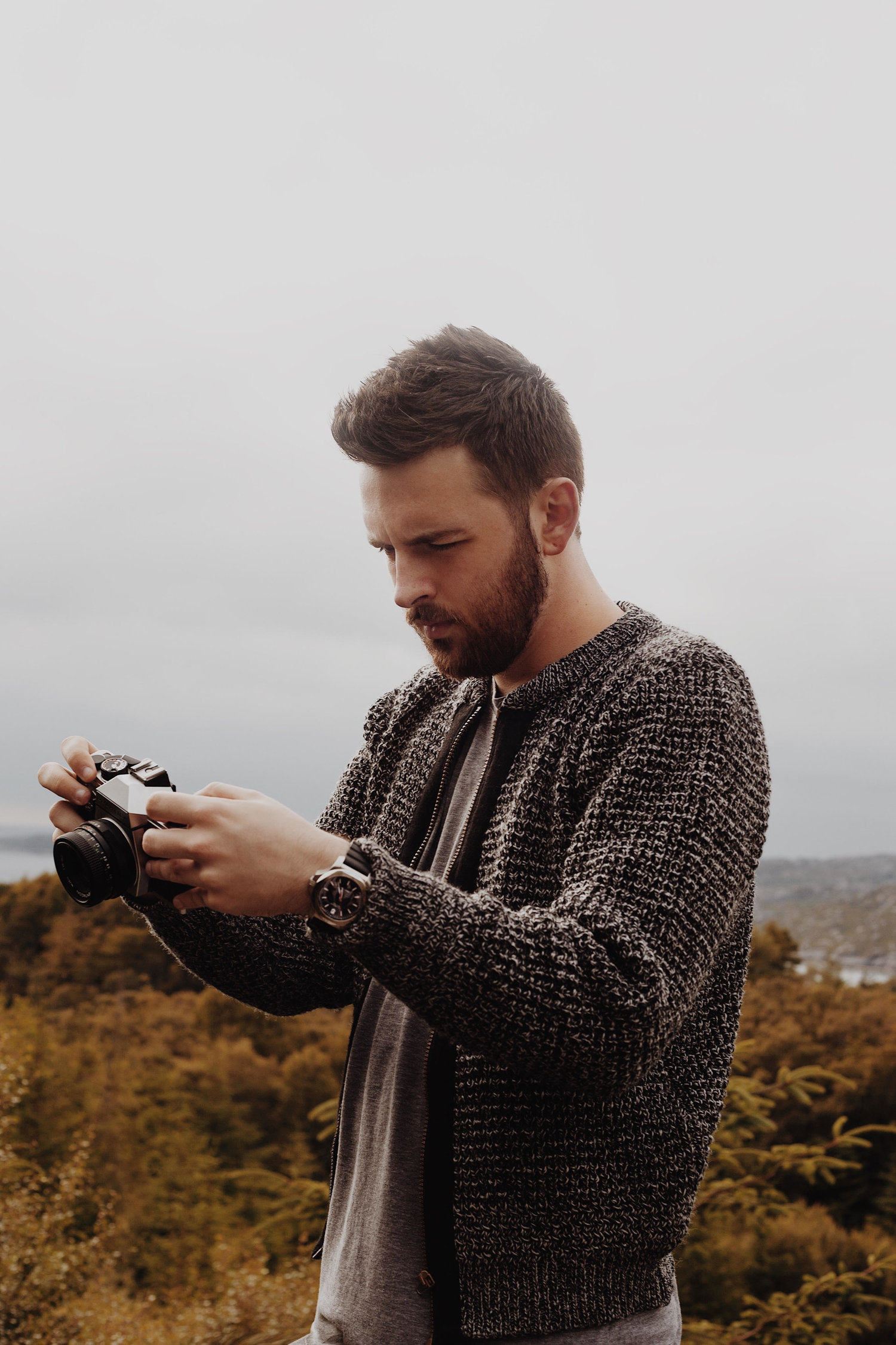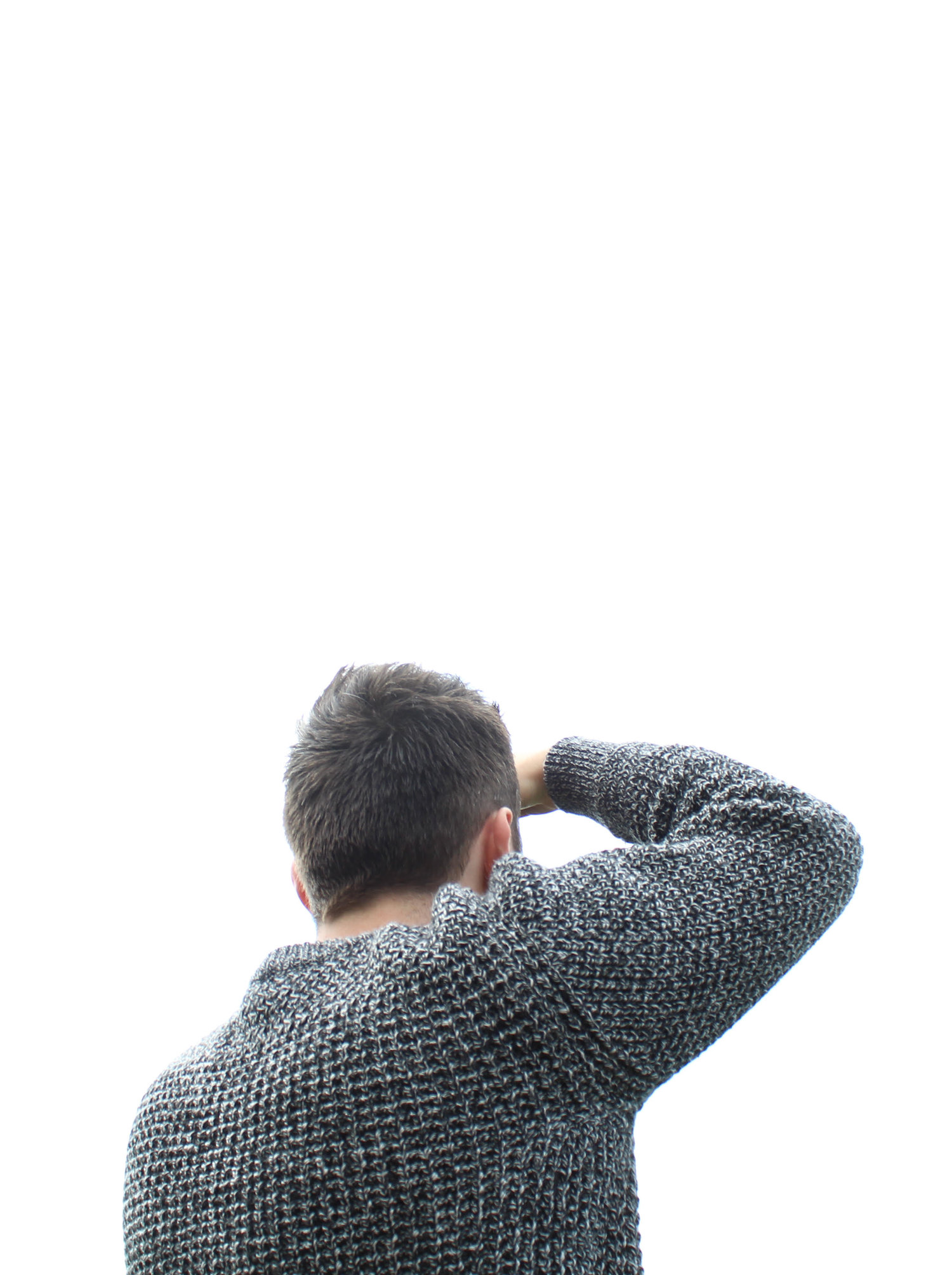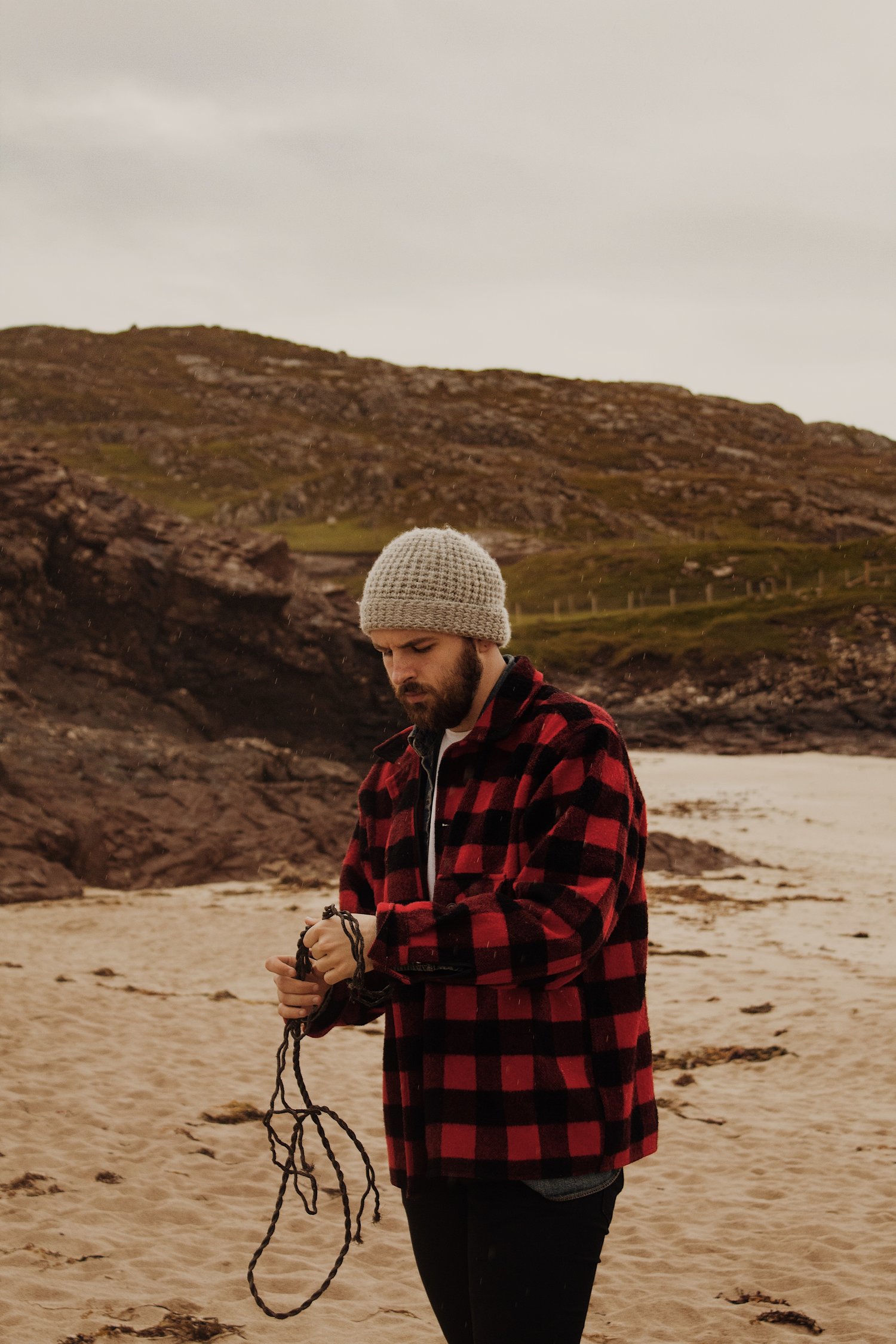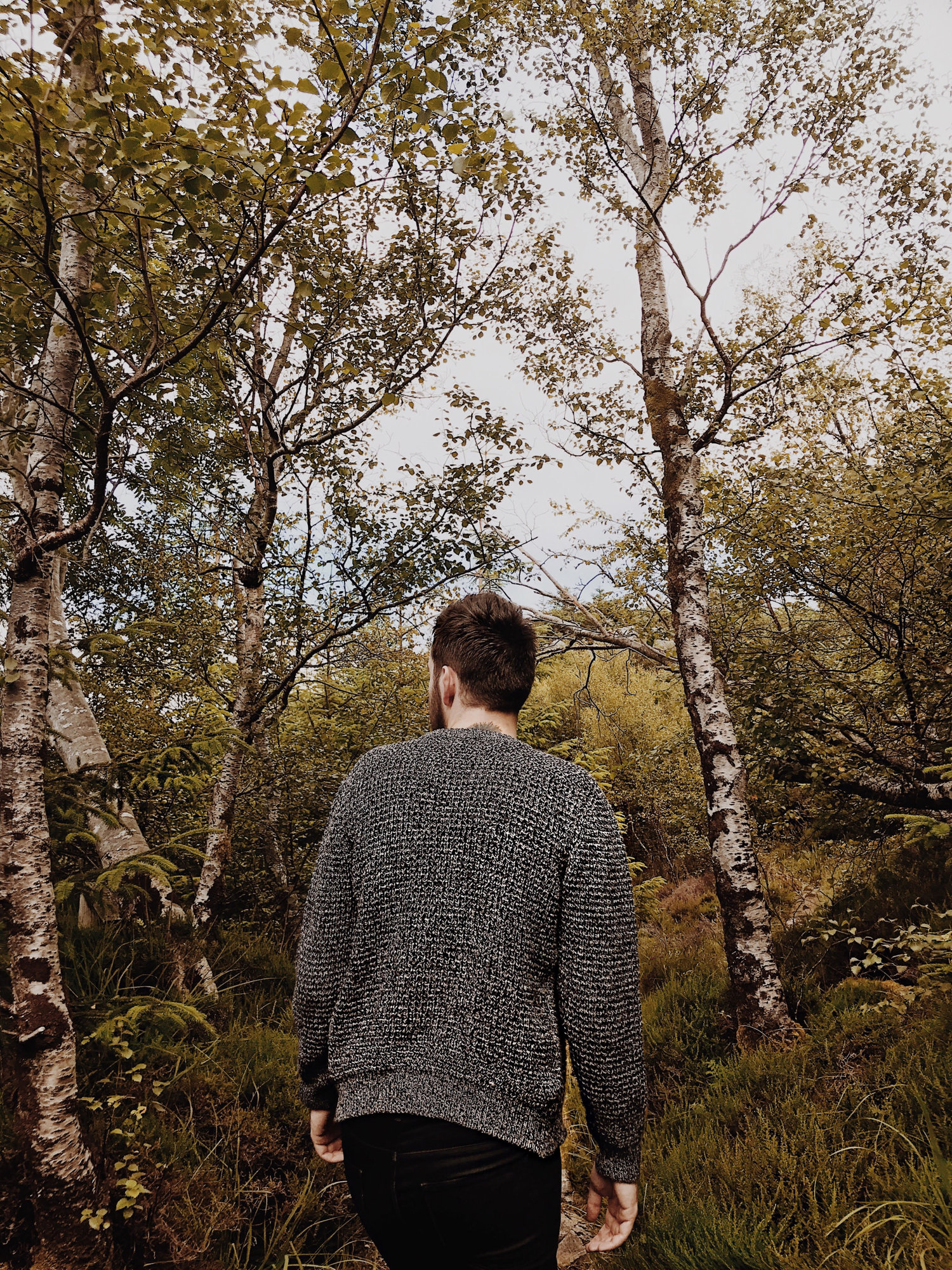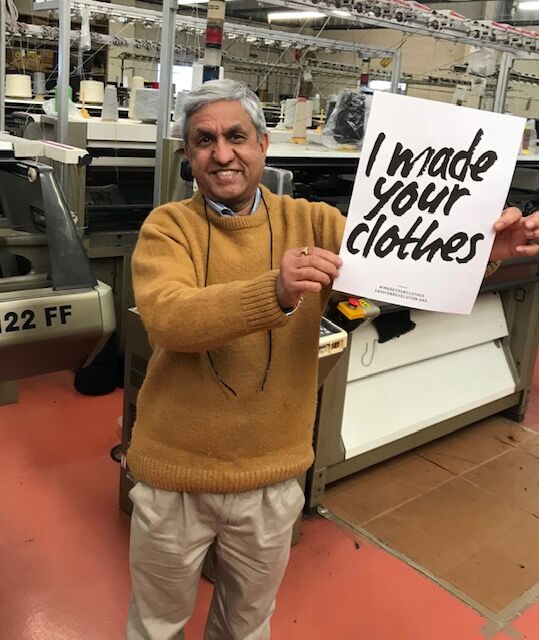

Fashion Revolution Week is a campaign set up by the charity Fashion Revolution. This year it falls on the anniversary of the Rana Plaza factory collapse in Bangladesh. During this week brands and producers are being encouraged to show their transparency by using the hashtag #imadeyourclothes.
Fashion Revolution is a non-profit global movement based in over 100 countries around the world. They aim to transform the fashion industry with a focus on transparency in the fashion supply chain. With the main question being ‘Who Made My Clothes?’
Here at Peregrine we are incredibly proud of our history. Thomas Glover started the family run business in 1796 in Leicestershire. The manufacturing company J.G.Glover has been passed down through eight generations of the Glover Family.
“Every Friday Thomas would travel into Leicester on a horse and cart to collect the spun wool from Montfort knitting mill before taking it back to Wigston to knit it up into jumpers”
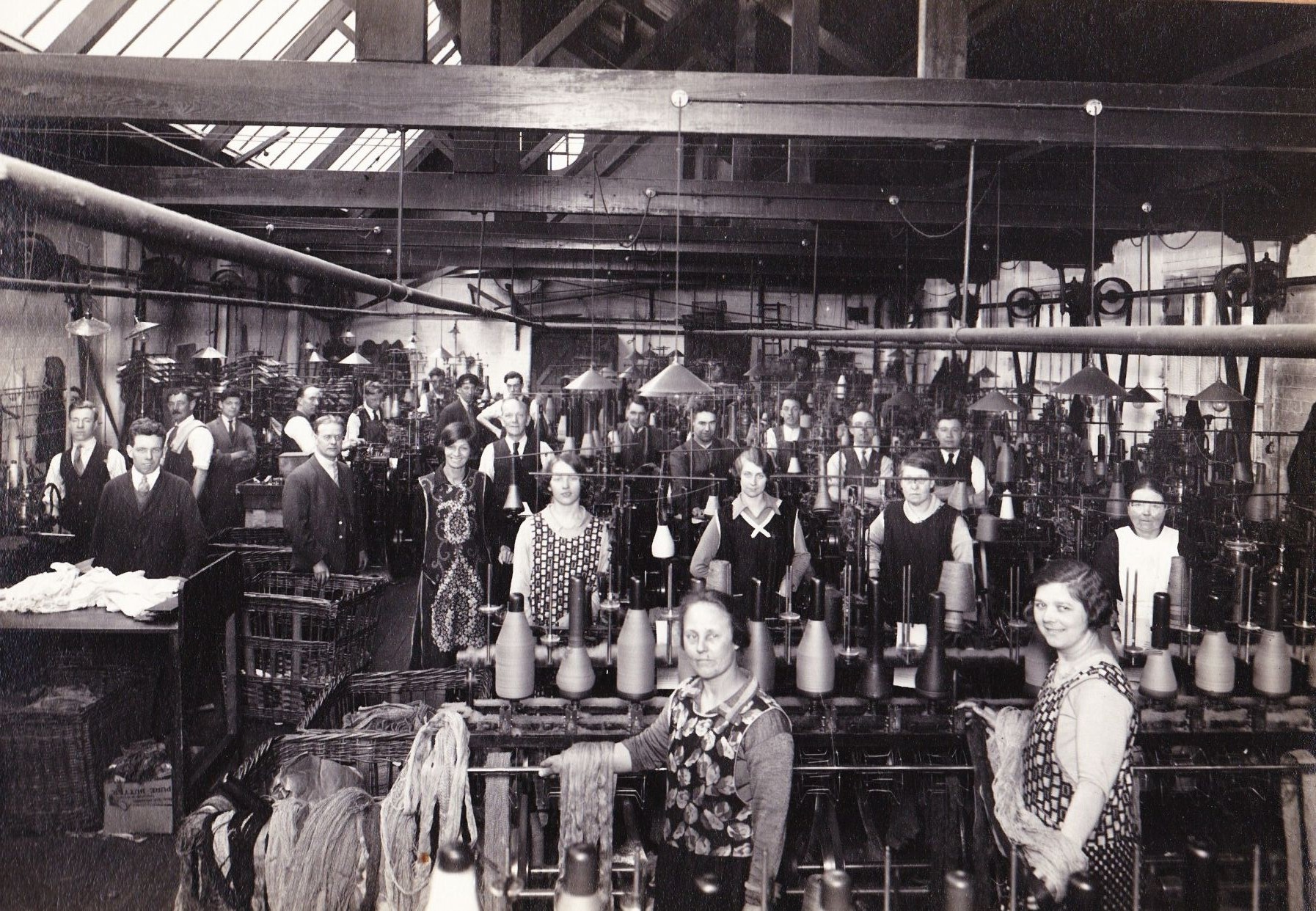
Peregrine Clothing was established as a brand in 1956 as a separate entity from the manufacturing business. It is still very much a family brand, Tom Glover, current managing director and designer took over the company in 2003 looking to revitalize the brand during what were challenging times for British clothing manufacturers.
Every step from the very first design to the finishing stitch has been executed here in the UK and we are extremely proud of this. We can control everything about the garment production from start to finish and we have a close working relationship with the team at our Manchester based factory. We want our customers to be excited about where their clothing comes from.

We caught up with Laura from @girlaboutthefarm to find out more about women in the farming industry.

What made you decide to give up your career in marketing to take on a farm. Was it a difficult decision to choose this life for yourself?
I had been working in marketing for just under 10 years and I loved it, but I was leading a sort of double life at times due to working in the day and then coming home to Andy’s family farm (my now husband) in the evening to feed our pet pigs, take the dogs for a walk and help out with the sheep and cows! Most weekends were spent helping Andy on his parents farm and I loved it so much! At lambing I would book time off my full time job to help and when we saw this long term tenancy on The Cowdray Estate was up for tender I made the decision, that if we were successful that I would make the leap into full time farming alongside Andy! It was too good an opportunity for us not too!
What do you notice about being a woman in agriculture that’s different from your male counterparts?
This a tough one. Women have been farming alongside men for years gone by and they have played a vital role in farmlife. I’m lucky to have come into farming where there are more and more young females going into farming in their own right and not because of their families heritage. I think thats great, as, like in every industry, we need an equal balance as every individual brings new ideas to the table.
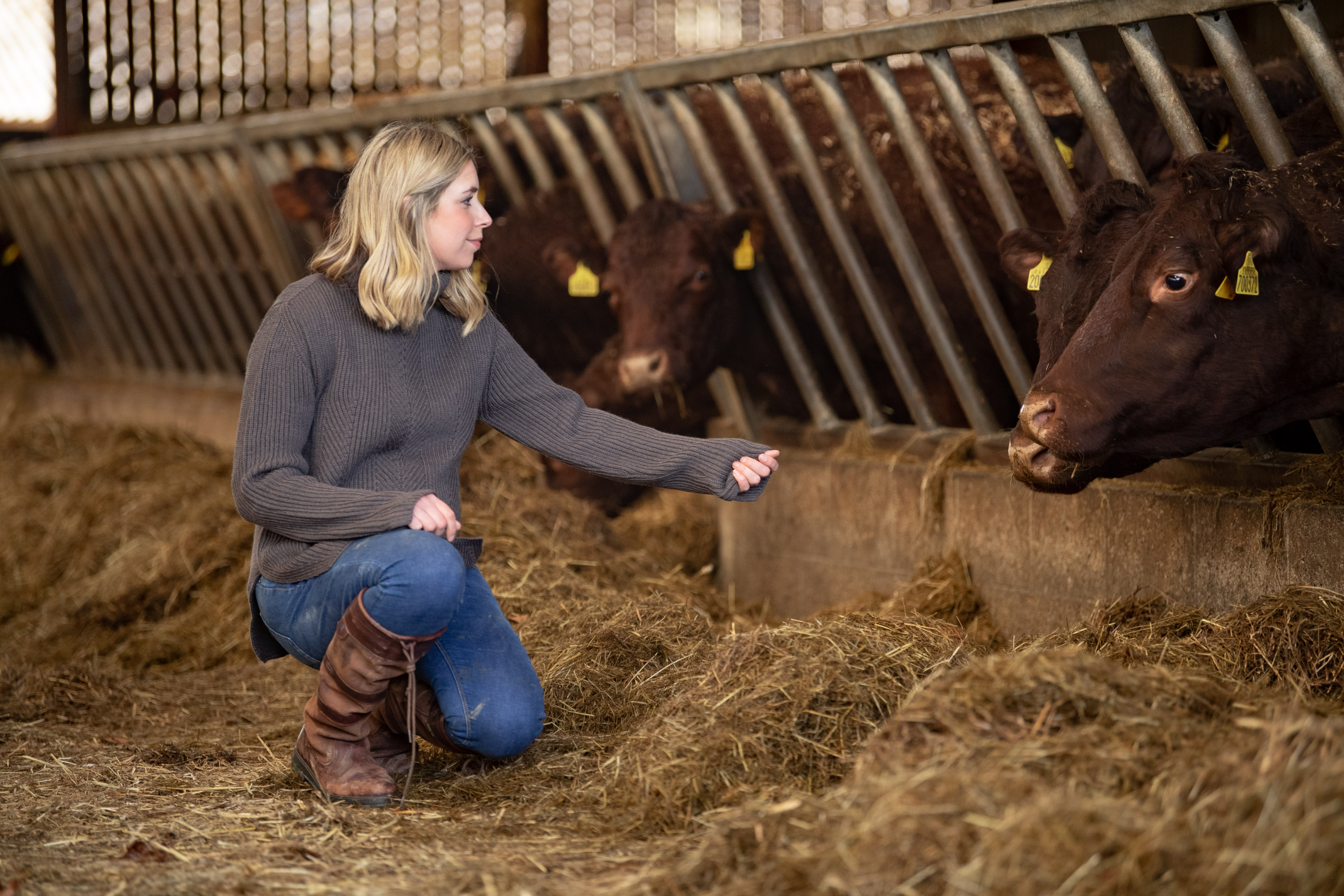
Do you think there’s more that could be done to encourage women to consider farming as a profession?
Yes, it saddens me to think that I would have never got into farming if it weren’t for Andy, as actually, farming as a practical career really suits my skills. It wasn’t an option that was ever presented to me at school – it was a career that you did if your family were farmers. I think more needs to be done to promote farming as being a really great career choice – no matter your background or what sex you are.
You’re very active on social media. What made you decide to incorporate social media into promoting your operation and telling the story of being a farmer?
It just sort of evolved really, I started my blog as a way of documenting what I was up to on a daily basis for my friends and family to read, as they didn’t really have a clue – and why would they?! Then people started engaging and I realised that people loved to see what we were up to on a daily basis, whether it be moving large mobs of sheep up on the hill with the dogs – or feeding the cows. Social media became a way that I could easily share what we were doing each day and then just became second nature.
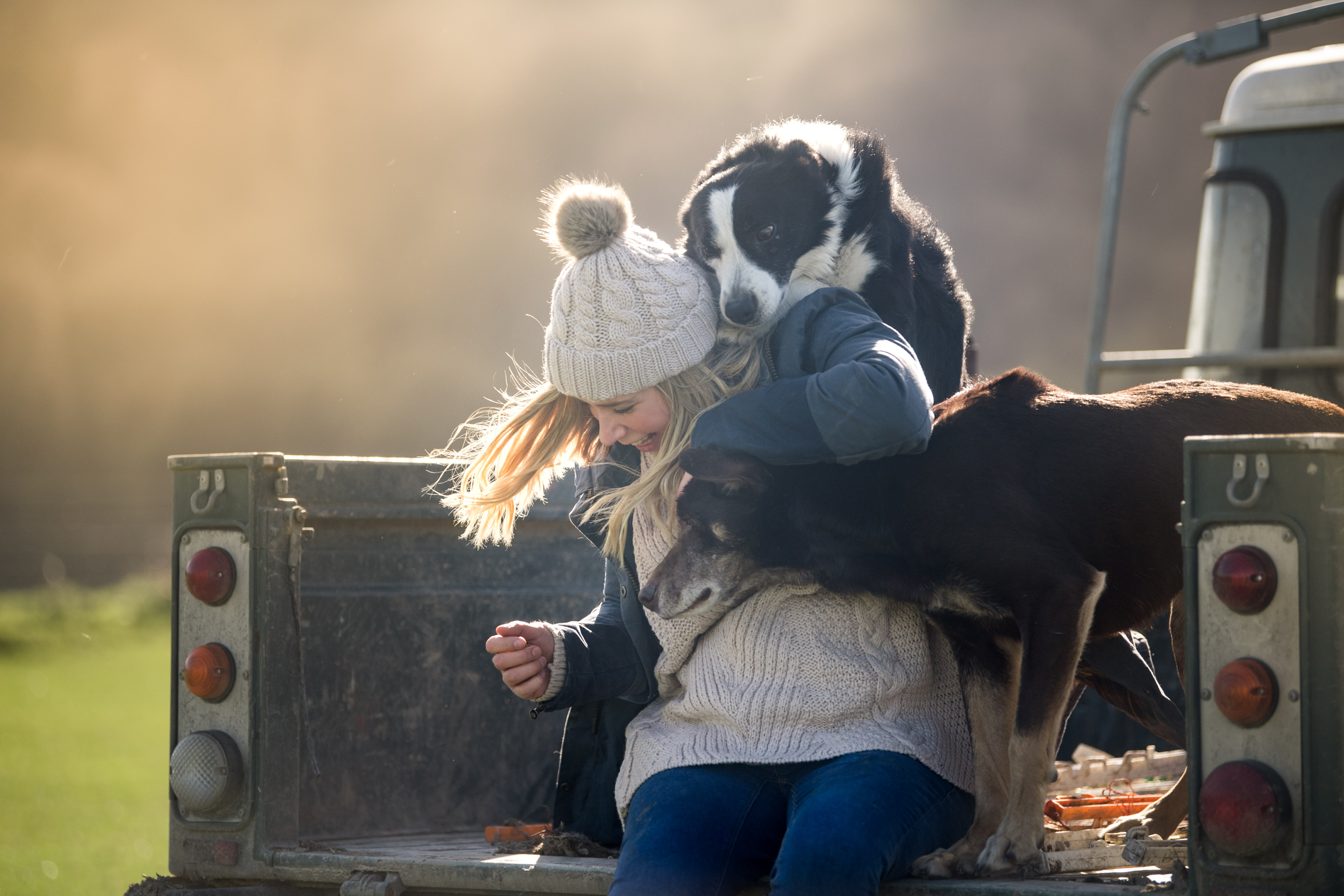
Do you have any advice for young women contemplating a career in agriculture?
I would say, get out there and get experience – I can guarantee that most local farmers will always be looking for some help/someone to take on for work experience. Keep your enthusiasm and determination because it will pay off! Some of the best farmers I have met are first generation farmers, namely my in laws actually who started the sheep business from scratch – my mother in law worked in a bank back in the day – and during lambing, there is no one I would rather take advice from! She’s the best in her field (excuse the pun!).
You have recently announced your pregnancy on social media – congratulations! Will you encourage your child to follow in your footsteps?
Thank you, we are thrilled! A farm is just the best place for a child to grow up around – and I’m so excited to raise our children in the countryside! We’re happy for our children to make their own minds up! I wouldn’t care if they wanted nothing to do with the farm, but if they did, then that would be lovely too! Every farmers son or daughter I’ve met talks so fondly about growing up on the farm – and most of them still have involvement in their family farms now to this day – even if not full time!
A huge thank you to Laura for catching up with us and giving such a great insight into the farming industry. Make sure to check out her blog – Girl about the farm and Instagram @girlabouthefarm for more brilliant photos and stories from the farm.
Photos by the talented Kerry Jordan (@fur_and_fables)
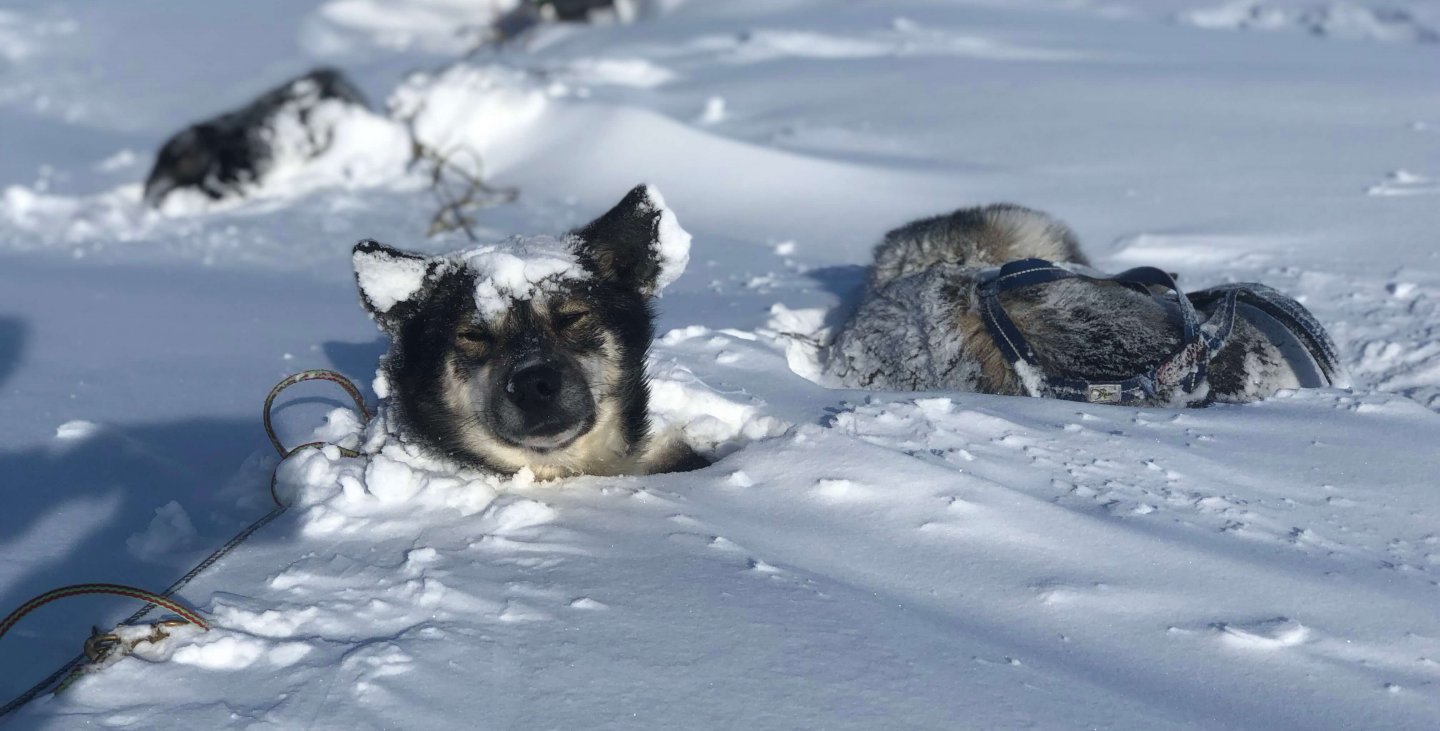
Here at Peregrine we want to make sure our jumpers and coats stand up to the test of the most extreme weather. We thought there would be no better way to test this than by getting in touch with our friends at family run business Husky Tours Lapland. They face some of the harshest winter weather and with over 80 huskies to look after there is no escaping it.
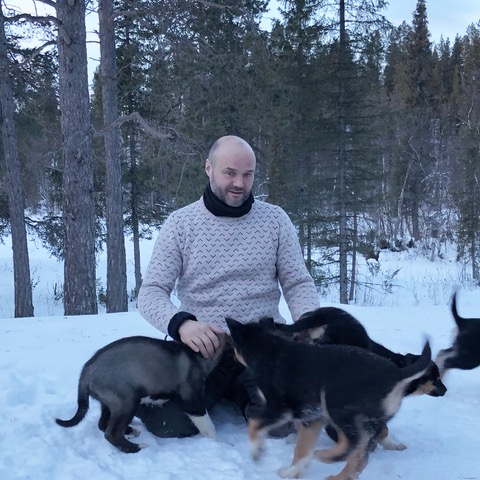

Kent wears the Larsen Crew Neck in Ivory – Jordana wears the Heather Jacket in Slate with a Ribbed Beanie in Mole.
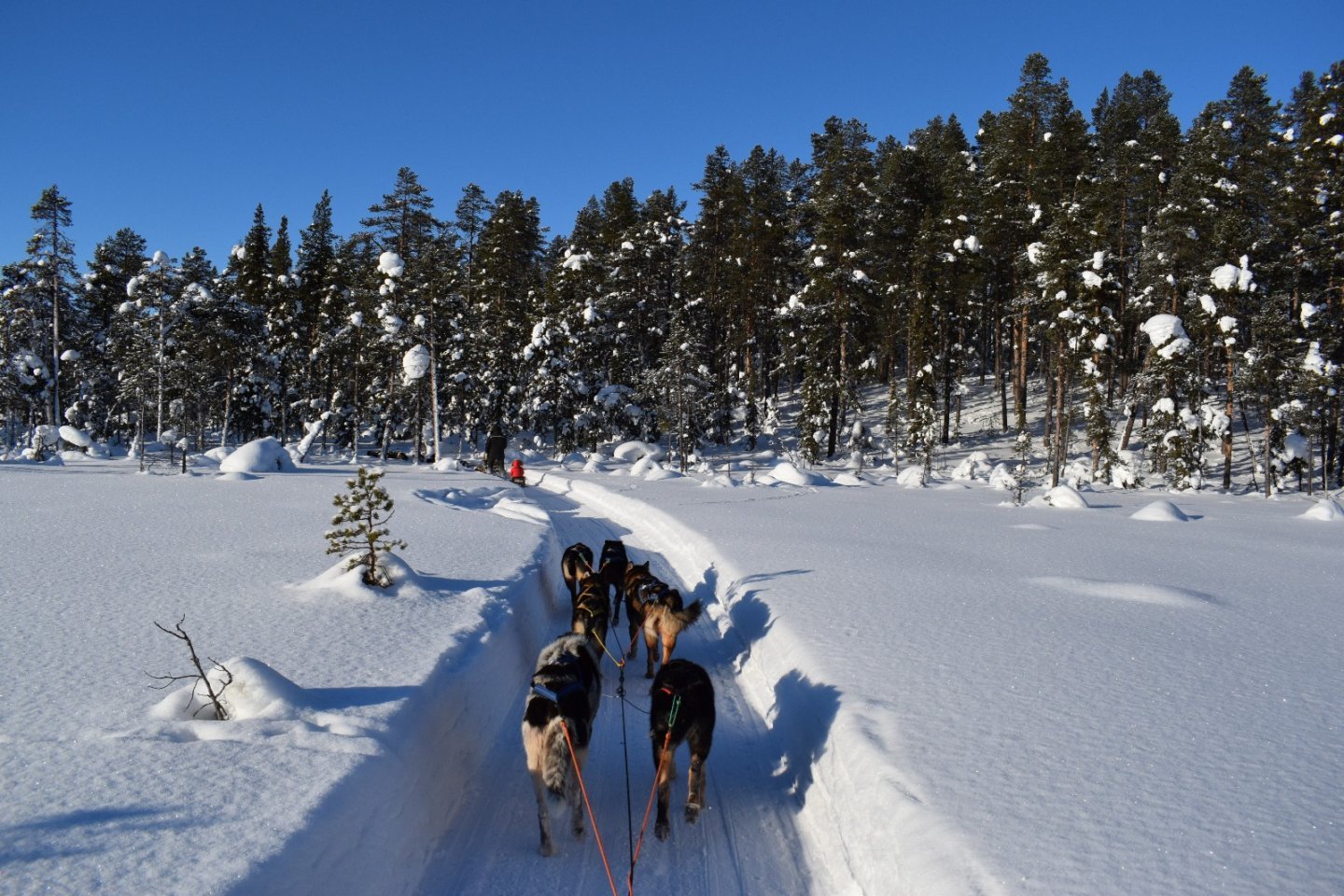
In December 2005 I was working for an adventure company that sent me to Kiruna, Sweden. I had a group that went for a husky trip, where I met my current husband. He was one of the guides and he took me on the ride of my life!! From there I ‘missed’ my flight home and settled in Norway for a little while untill we could find neutral ground in Svappavaara. We worked as freelancers for many the other dog sledding companies in the area at that time, we had more and more requests to run trips on our own. Having the knowledge of how others run their companies we decided to try things a little differently. Create a company to share our passion with other adventurers, and try to live the outdoor lifestyle with our dogs and family!
Here we have experienced minus 48! The way we prepare is to layer.. and layer and layer! This is where merino wool comes in!! It’s all about dressing properly! We run our trips at all temperatures, so it’s imperative we have excellent gear. Keeping your neck and head warm is really important. as is your feet with warm wool socks.
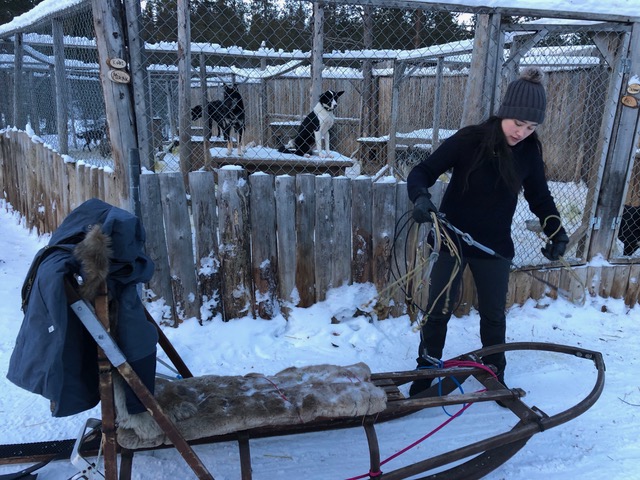
From our sit back and relax tours where guests get to sit on the sled and just enjoy the ride and the scenery (particularly the amazing aurora borealis in the evening) to tours where the guests get to help harness the dogs, drive them together with a friend and overnight on our weekend trips. On our combo trip, there’s a combination of both sitting and driving. One person sits and the other person drives the team of 5 dogs. Halfway the guests get to swap over so they get the best of both worlds. For those that want to drive their own team of dogs this is also available as just a day trip, an overnight tour staying at our homely lodge or a weekend trip!
The incredible feeling of freedom. When you are on the sled, with 8 dogs in front of you, complete silence, starlit sky, aurora borealis above you..it doesn’t get any better than this!
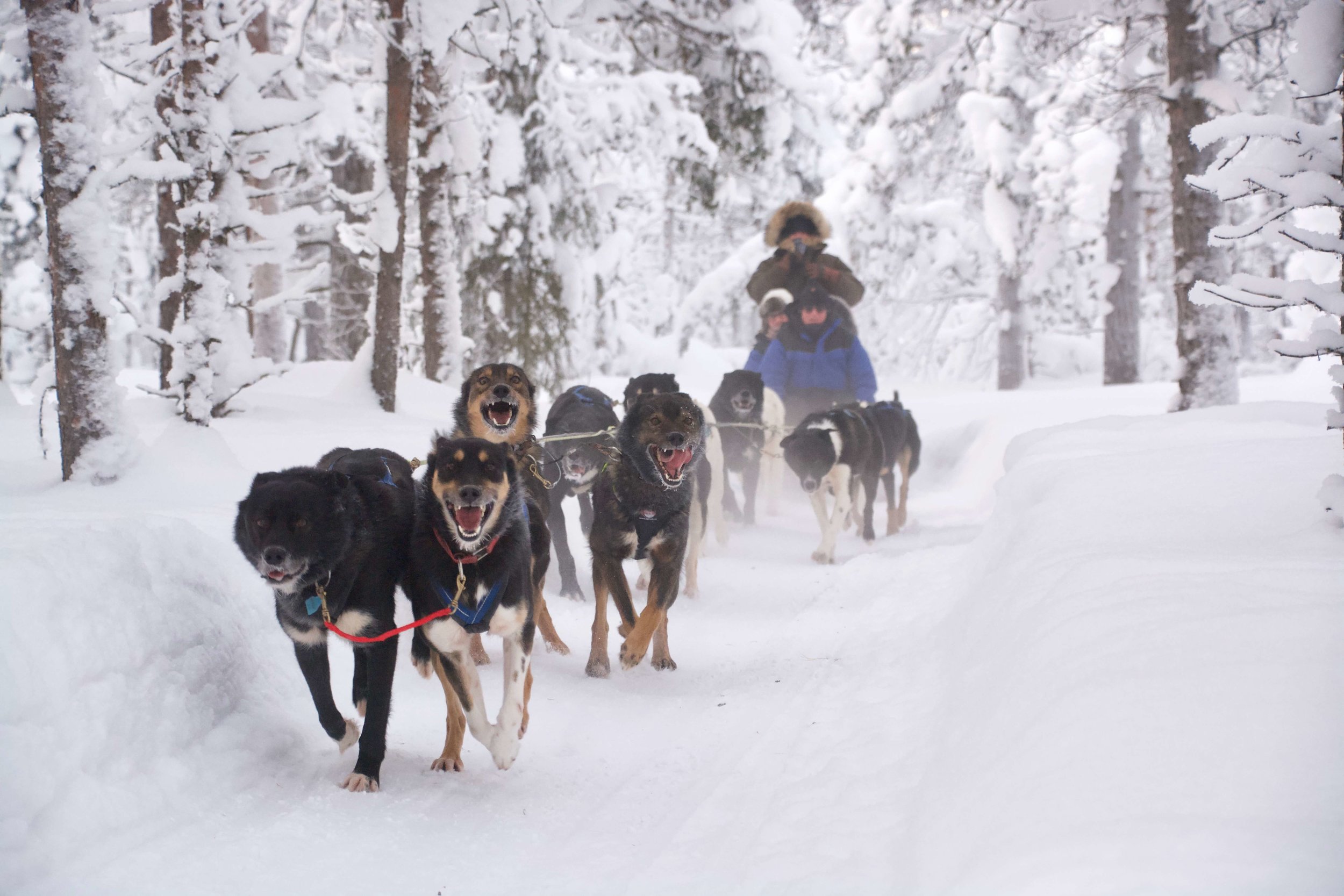
Thank you to Jordana, Kent and the whole family.
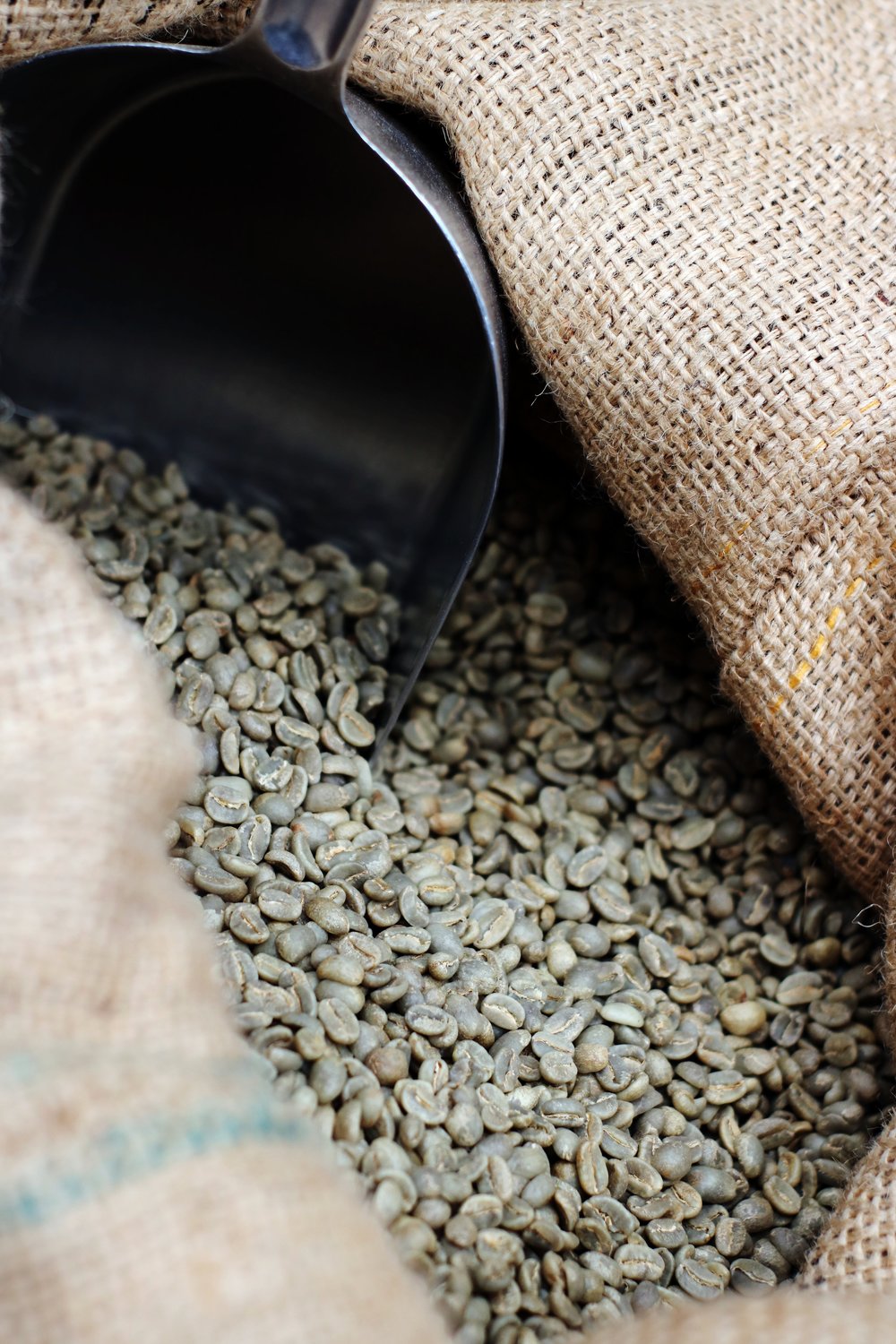
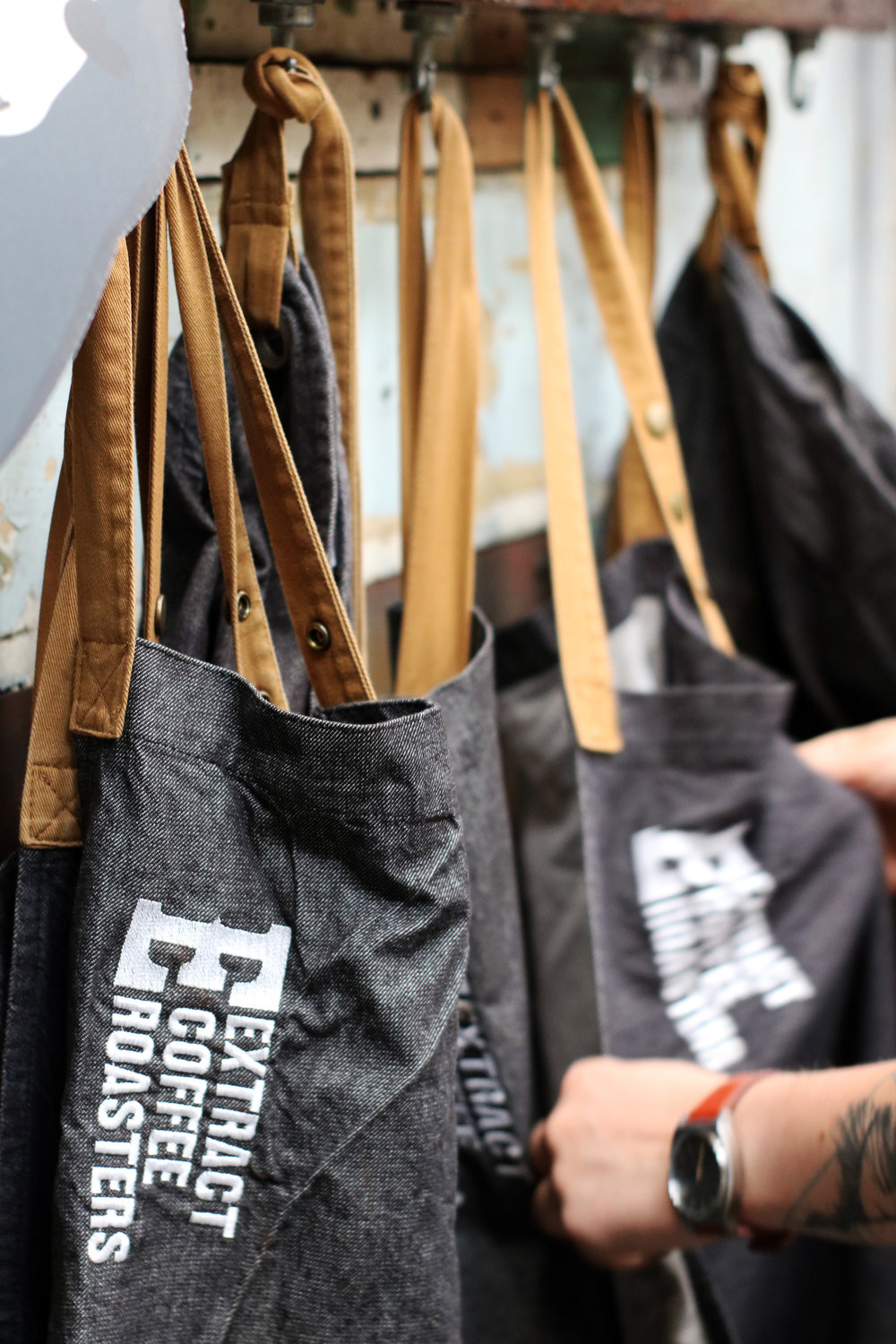
I like a filter coffee first thing, something with punch and a fruit note. Right now either the Colombian Veracruz or Mutungati AB from Kenya.
First thing is usually a V60 and I always wait until I get to work where the water is filtered, and the grinder is better than the one at home!
A good coffee for me is always out. I like someone else to make and serve it. I can fall into the trap of getting overly analytical about coffee at work. So on a day off, at a great cafe, you can’t beat a coffee you didn’t make yourself!
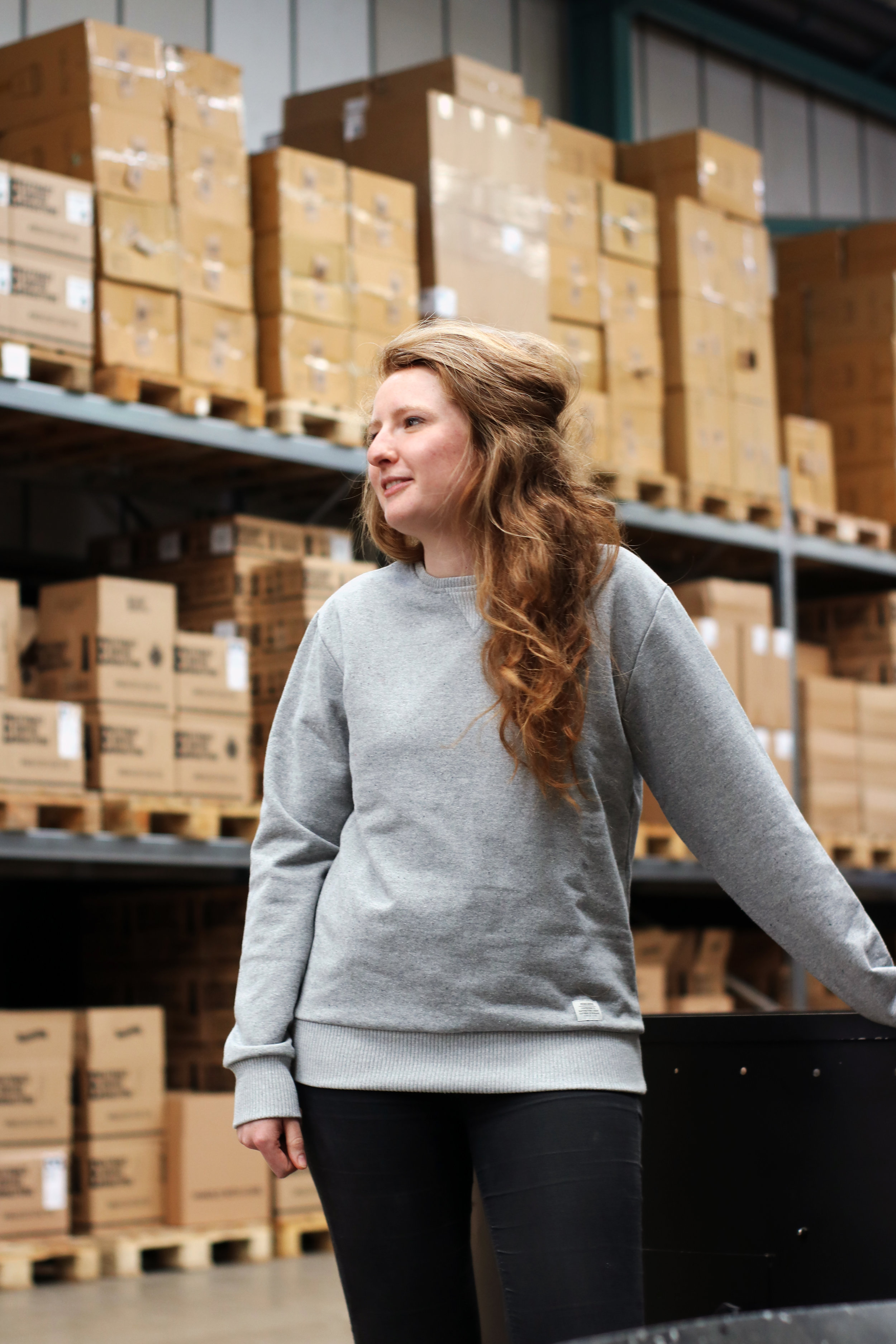
The company began as a coffee cart, and the coffee was roasted in a garage in fishponds (Bristol)! Dreams were to create a roastery/cafe, inspired by New Zealand coffee culture, serving and selling exceptional and accessible coffee. As business progressed, the roasting and machine restoration ultimately became our focus to make the business what it is today.
Our sourcing procedure has always been to receive green (raw) coffee samples, test roast them ourselves and select coffees to be imported for us. However, recently we have begun travelling to the farms directly, tasting coffees at point of origin, and building long-term relationships with those farmers. We now regularly travel to Peru and Colombia, and have visited El Salvador, Panama & Kenya too.
Find your niche. Find out what you do that makes you better. For us that is not just great coffee, its taking vintage roasters and rebuilding them ourselves. We also offer barista training, machine supply, support and engineering. All these things ultimately help make the coffee better.
(building community around coffee, customer relationships)
Building long standing relationships with our farms ensures stable income for farmers, workers and their families. It has also lead us to working on new projects, for example at Marianela in Colombia they are now naturally processing some smaller lots for us, for which we pay a premium for the more unusual flavour profiles and the inherent risks of this method of processing.
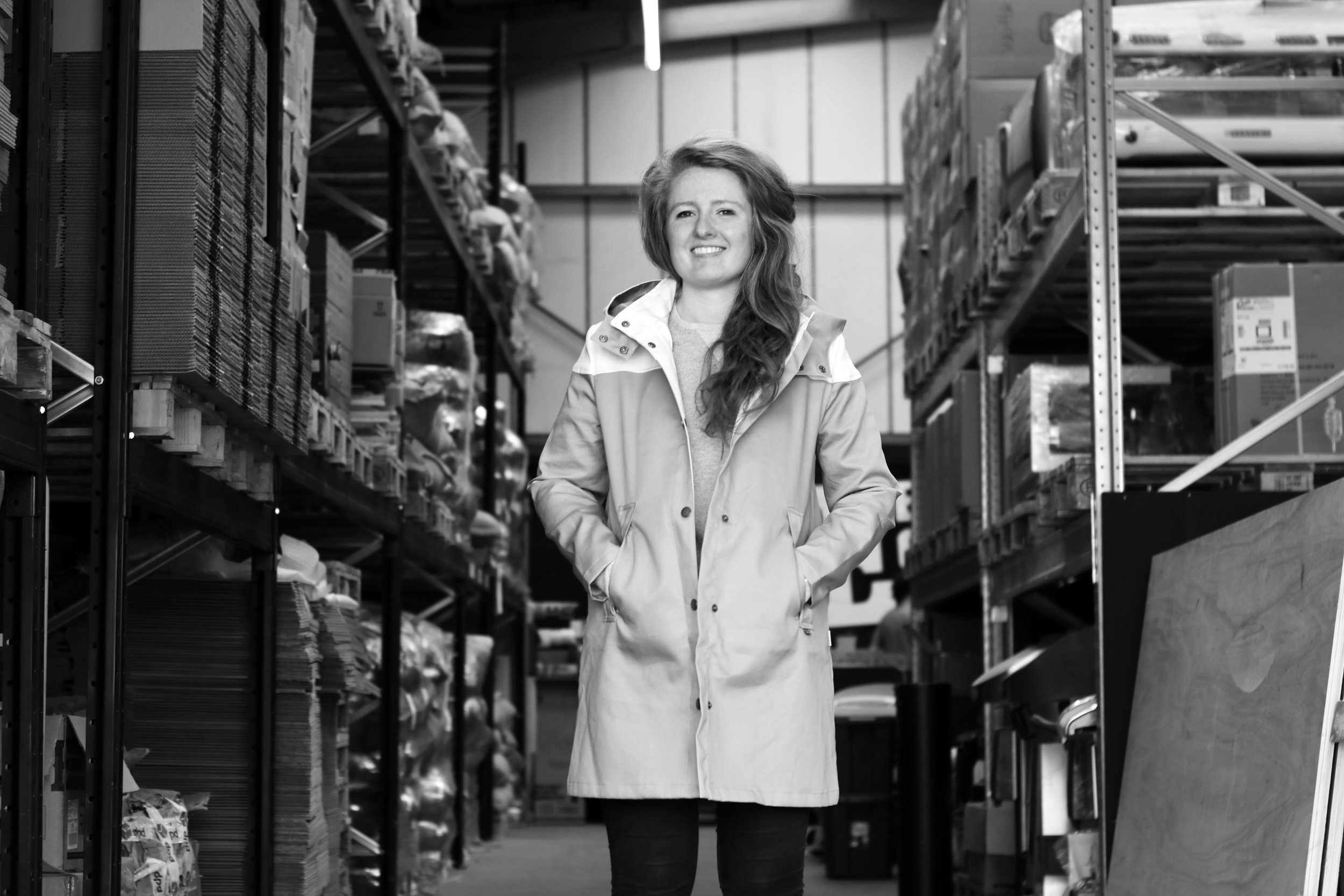
Yes. We are currently a 30% female workforce, although only two of us work in the production team. I think because it is a fairly intense manual job it isn’t a job that women naturally gravitate to. Though this is changing, and so it should. Unfortunately, like many industries, there are many women involved in lower paid parts of the sector. Many women work as cherry pickers and at sorting mills, particularly in East Africa. And closer to home, you also find more women working in cafes than you do in management or further up the supply chain. We are working to improve visibility of women in our business in a hope to help change perceptions. And maybe one day we will see full equality across the industry.
I want to say both! We have heavily modified many of our roasters, and yet they still retain the old fashioned parts that made them great. We think it is important to upcycle and restore what is available to us, and this was even truer when we were a very small start up, and still encompasses our style and ethos now. We are extremely happy with the approach we take to roasting. It is still very much a hands on process here, and all of our tweaks and developments are decided on the cupping table – where we’re meticulously test and taste each batch to insure the best possible product goes out the door.
So far I have only been to Colombia – so that’s definitely my favourite – and it was really great! As head of coffee – don’t tend to leave the roastery
London site? Building our community. Callum competing UKBC.

We are over the moon to introduce to your our newest collaborators, Crafted Chronicles. Presenting a limited-run collection of home ware, gifts and tech accessories that features eight exciting products all crafted by hand by Peter and his fiance Esther. These products are now available to shop as online exclusives in our Men’s and Ladies accessories categories.
Peter has always been a maker of things, developing and refining his love for crafting through the years by exploring different avenues to bring, as he puts it, ‘a bit of tangible excellence and beauty into others stories and lives’.
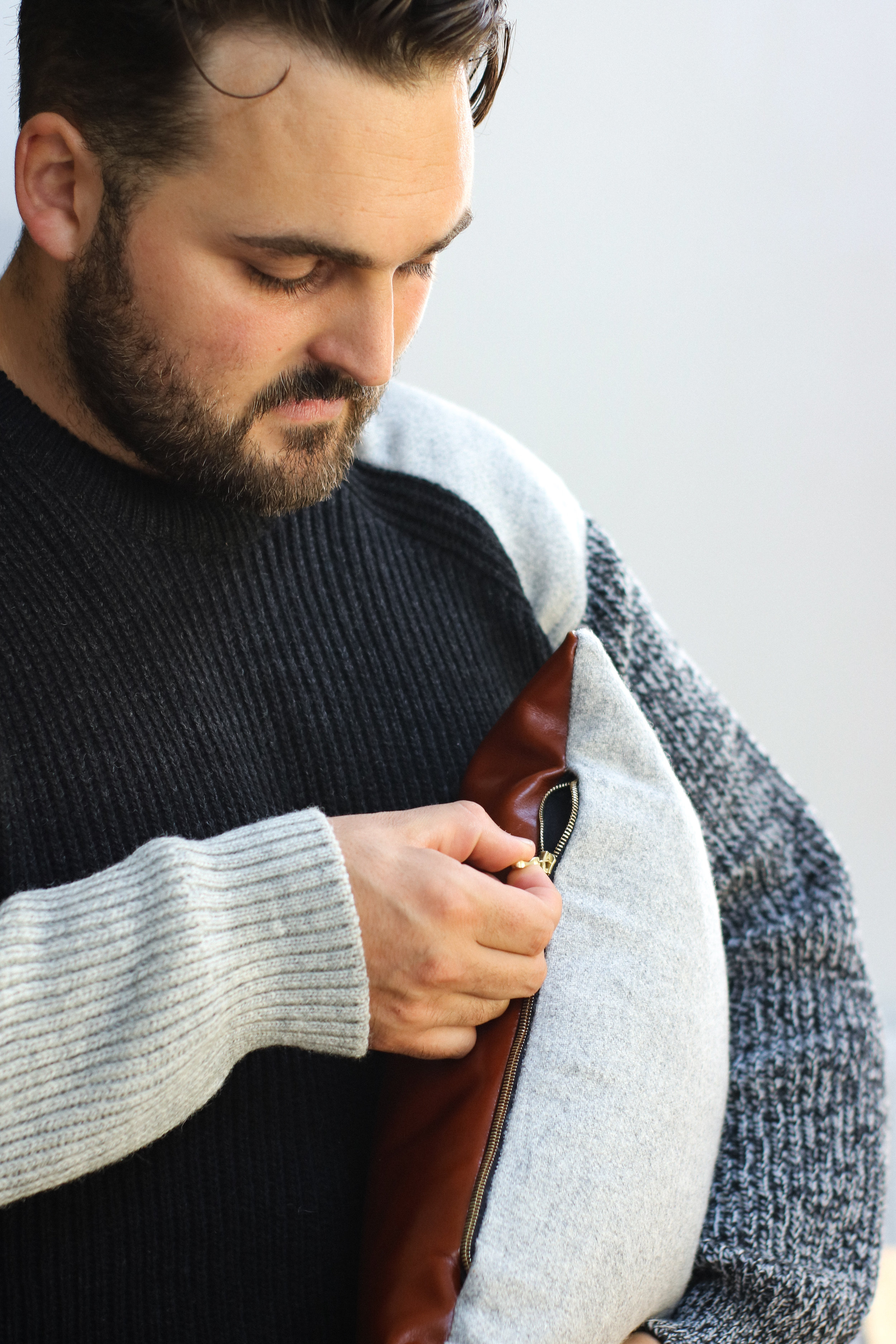
The Crafted products are just that; Excellent and beautiful, true works of art made from strong and pliable vegetable tanned leather, brushed antique brass and John Hanley Woolen tweed. The premium raw materials are shaped into minimal but highly functional items that make the perfect tools to approach every day 21st century life. Peter has one eye on past traditions, studying things like book binding and carpentry and one eye on the tech trends of the future like the transition to cashless living.
Assisted in production by his talented, steady-handed partner Esther (who also models our womenswear collection) we couldn’t wait to work with the duo and present some carefully designed join-label products that tie in seamlessly with the story and fabrics of our own AW18 collection.
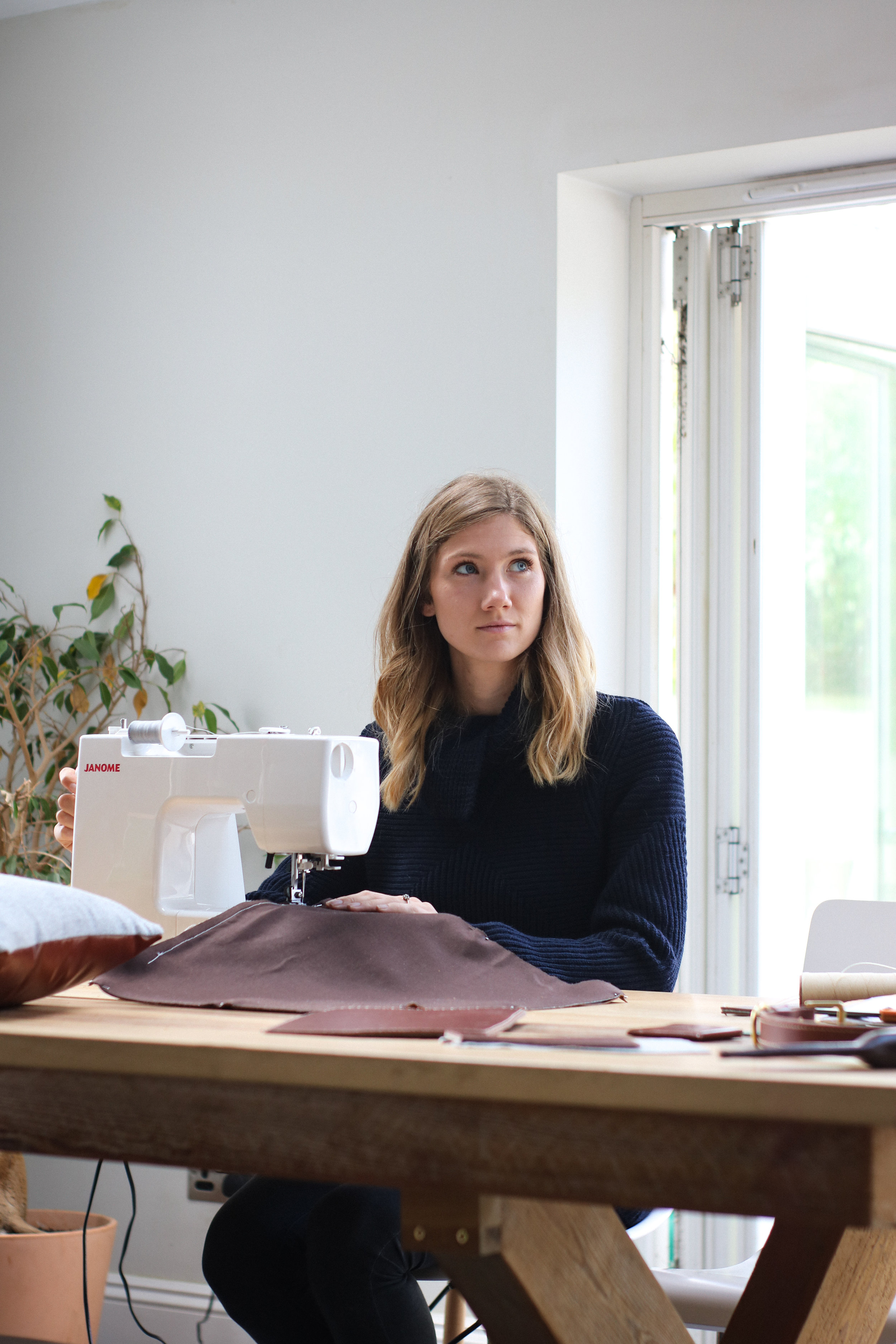




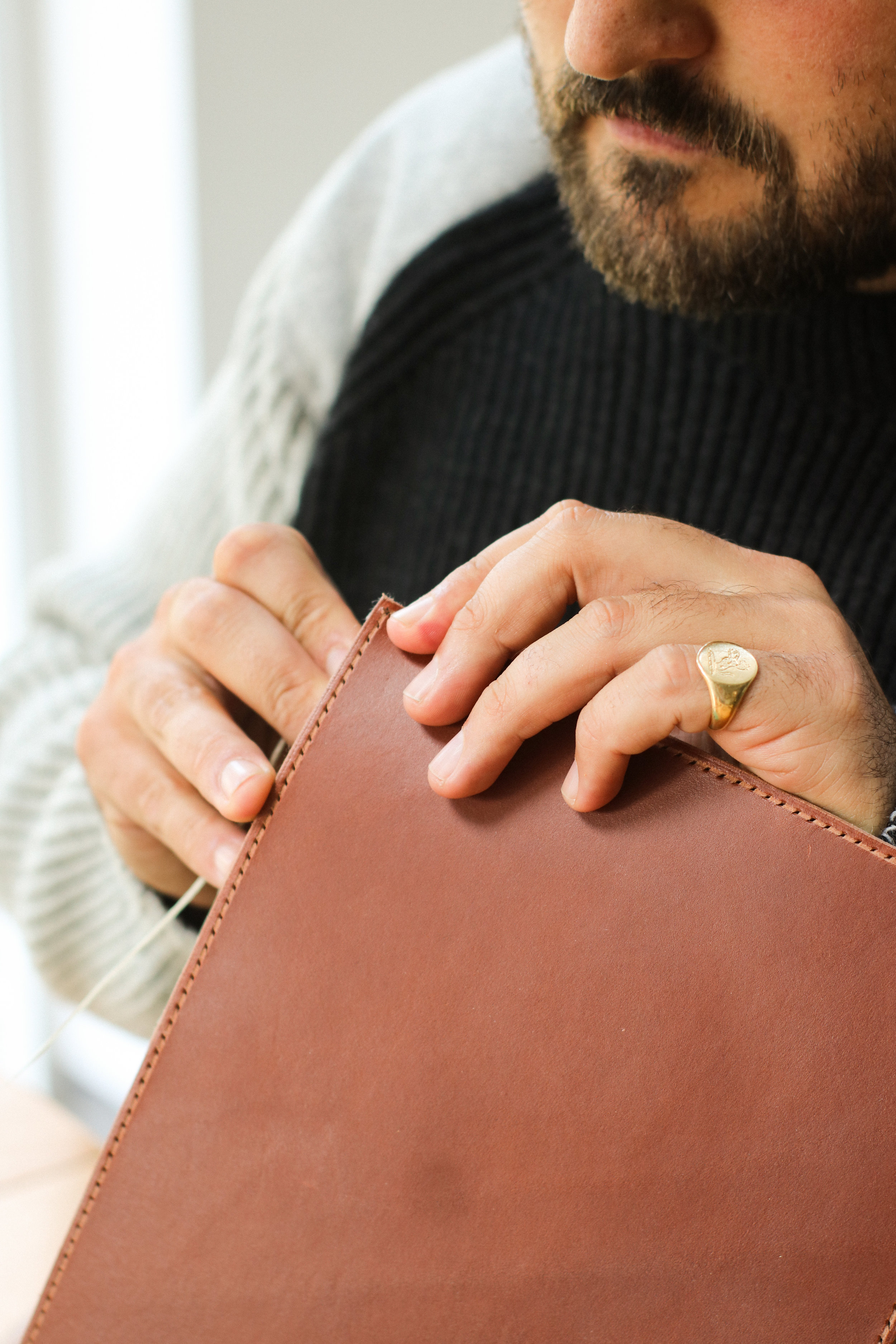
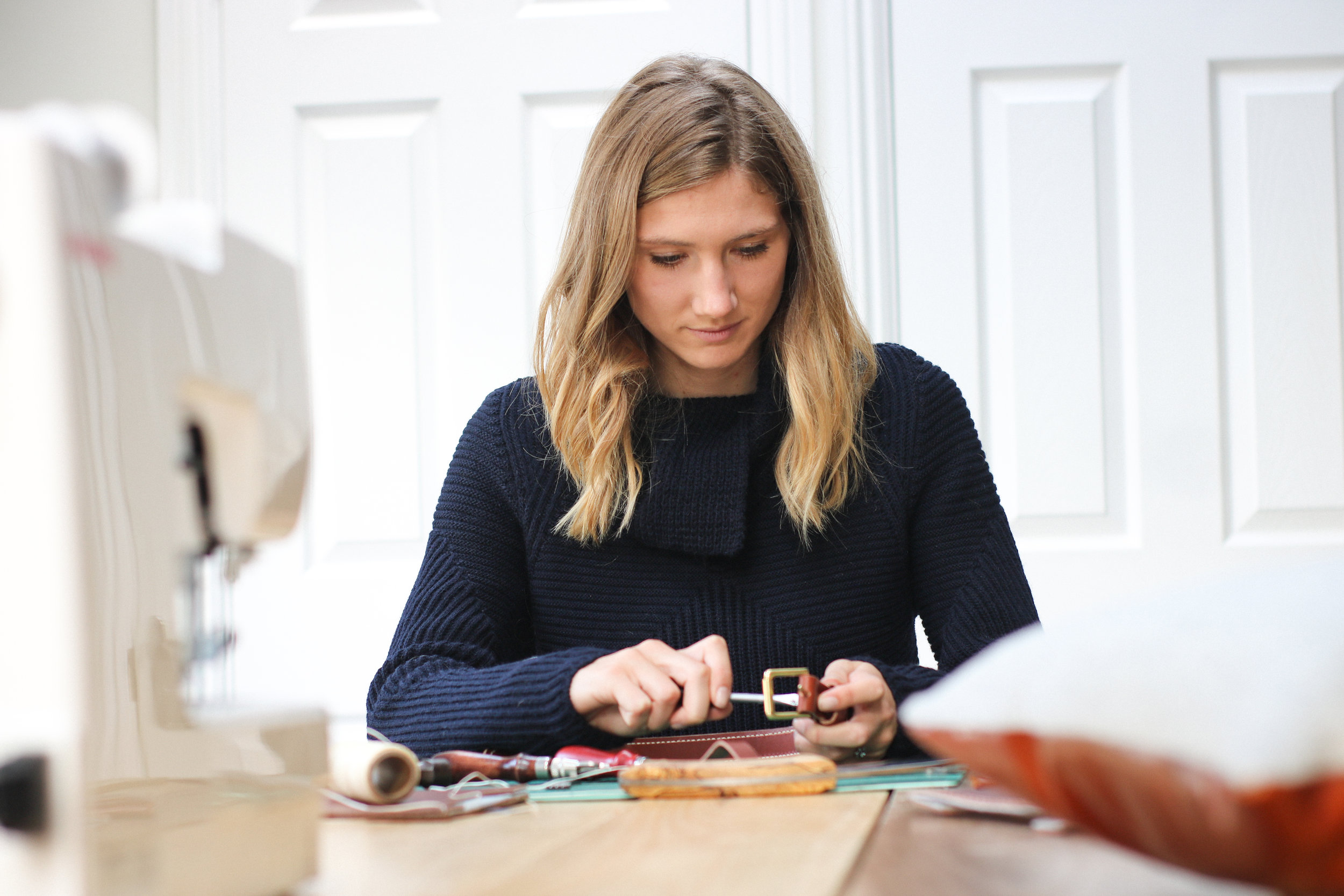

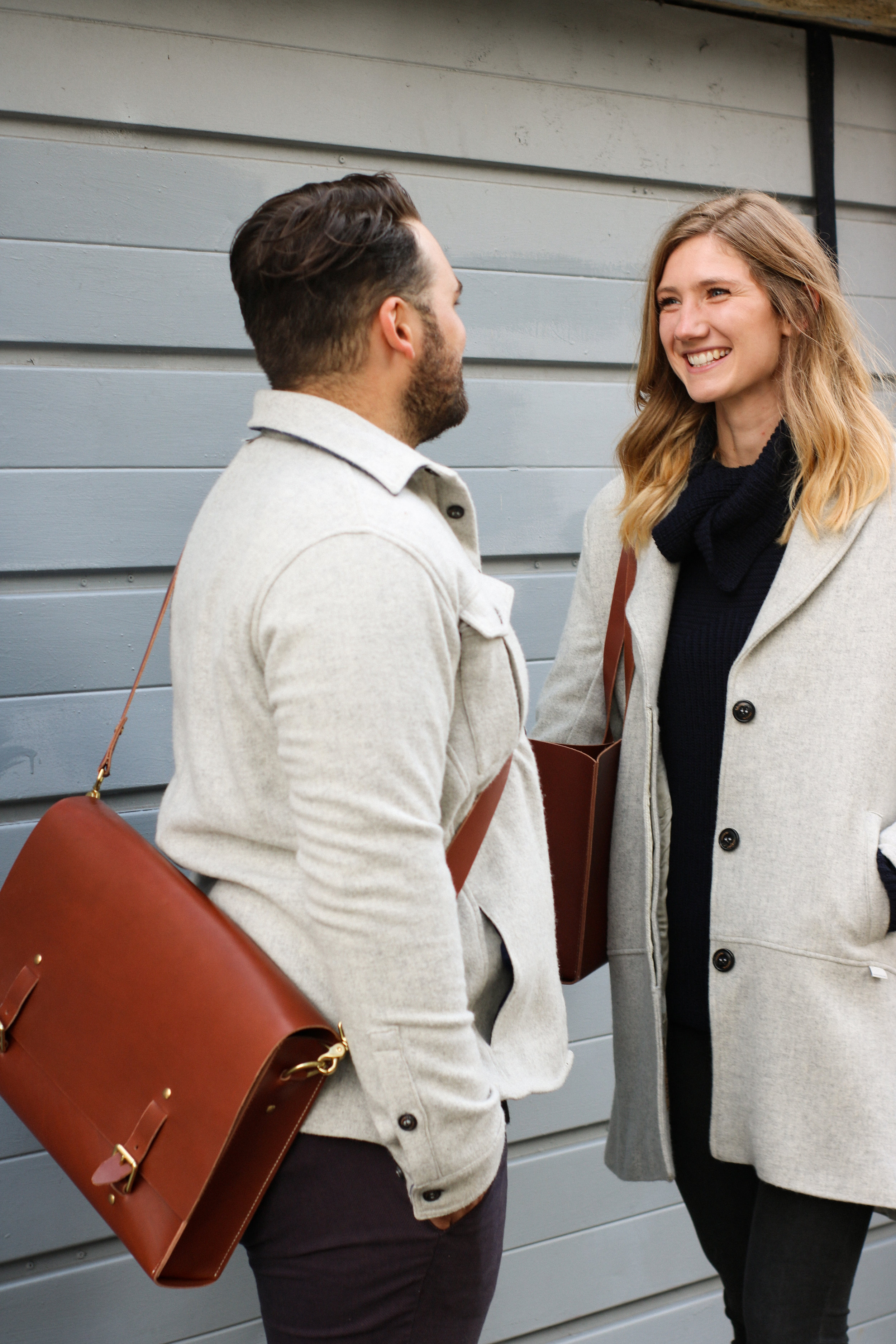
As part of our marketing strategy when it comes to presenting the newest Peregrine collections, we love to get other British manufacturers on board to celebrate their craftsmanship and really tell a story of heritage and integrity from head to toe. Collaboration and creativity are some of the best way to strengthen the slow but certain resurgence of the British manufacturing industry and to really celebrate it’s potential. We teamed up with the talent behind Banton Frameworks to bring you two interchangeable looks styling our AW18 collection with their beautiful acetate specs.
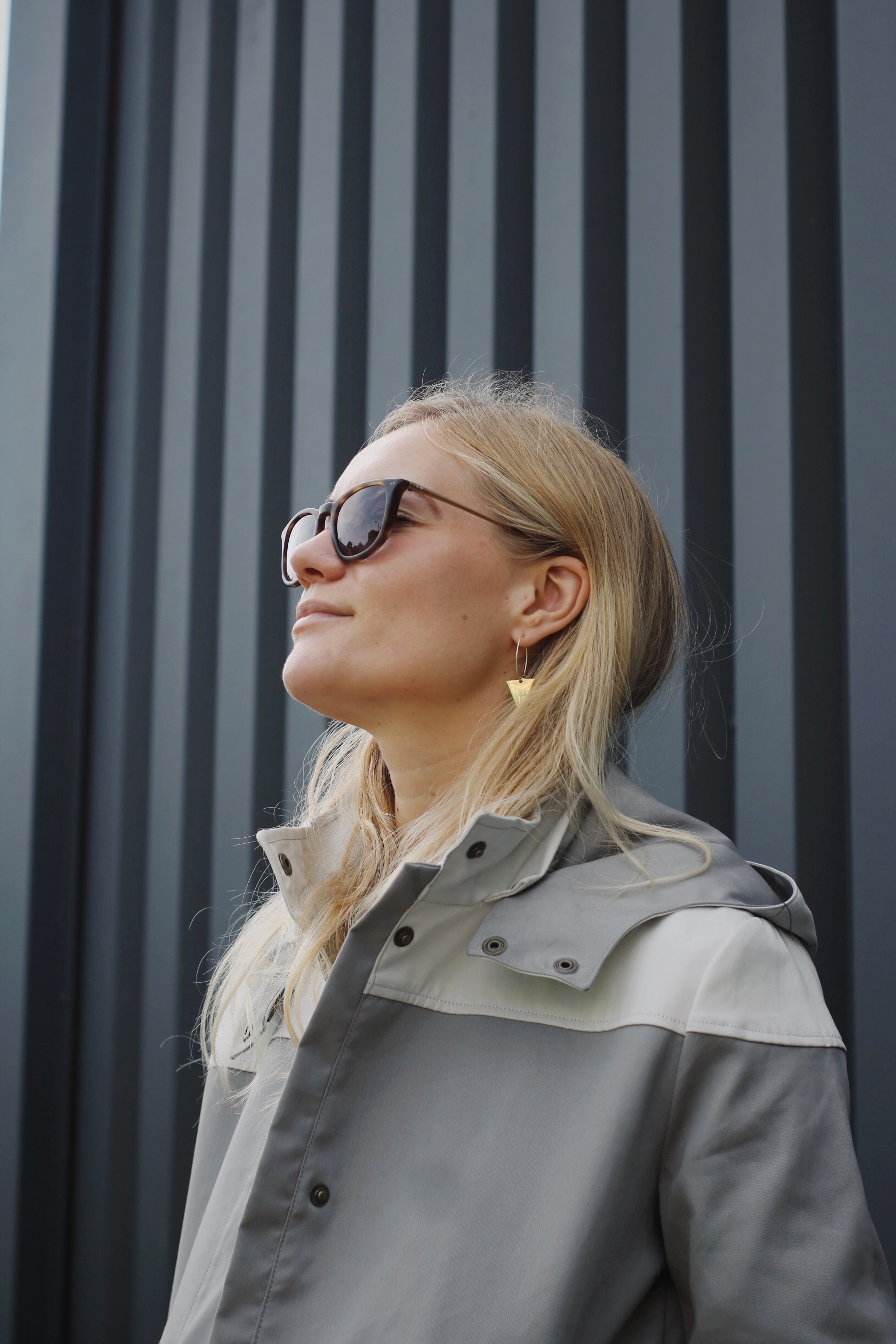

We styled one of our newest and sleekest Ladies jackets, the Carlyle Mac with our Mens Benson Sweatshirt and the BFW Profile Sunglasses in Tortoise-shell
Banton Frameworks is the post-grad brain child of co-founders Jamie and Lucy who decided to go against the grain and set up workshop in an era of digital, outsourcing and mass-production.
In the past there were many but now, truly British eye wear brands are few and far between. Most brands will engage you with phrases like ‘bespoke’ and ‘handmade’ and maybe ‘British design’ but a scarce few can really say they were made here in Britain (also by hand we must add) the way Banton Frameworks can. A sentiment that also resonates with us here at Peregrine.


BFW’s designs are versatile with a focus on structure and silhouette and are not categorized by things like price point or style but simply fall into either ‘Optical’ or ‘Sun’. We opted for the Profile Sunglasses which, upon arrival were weighty (but not too much so) and had a stunning matte finish like brushed satin as well as robust stainless steel arms. The frames are crafted from italian acetate and they arrive in a dramatic looking rubberized hard-case sealed with an industrial looking giant black elastic band – further evidence that no details are spared giving the product a real experiential element.

We styled our Mens Quilted bomber and Funky Jumper in Charcoal with the BW Profile Sunglasses in Grey Ghost
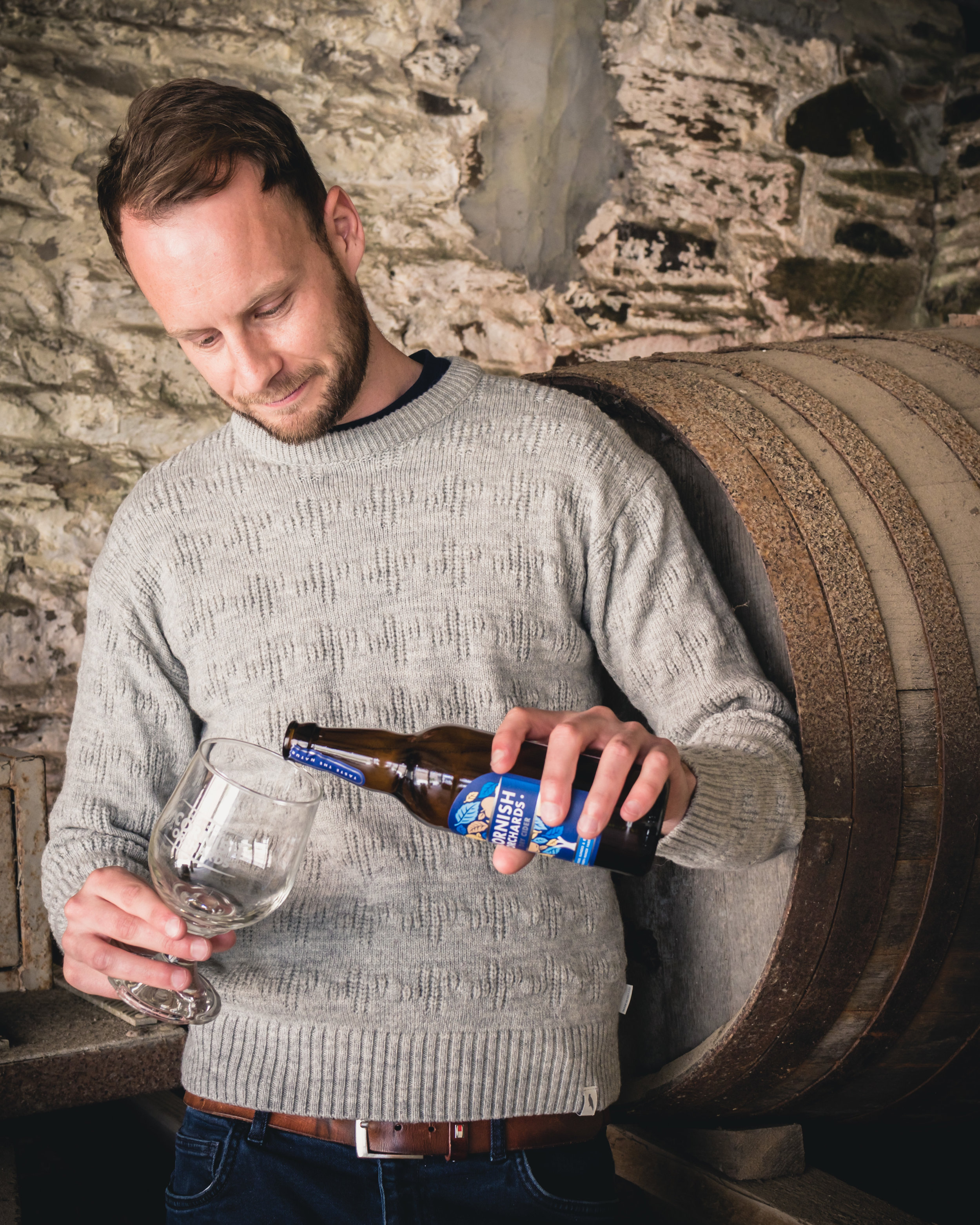
It’s a languid Tuesday afternoon and the time is dragging it’s heels because England is playing in just over two hours. On top of that, we’re in the frenzied thick of a two-week heat-wave (which the rest of the world would just call summer) and we would be lying if we said that cold, crisp alcoholic beverages weren’t at the fore-front of our mind. Cue our interview with Chris; Head Cider Maker of Cornish Orchards. A local Cider Mill that is in equal parts humble and mighty and which has a legacy and a quality to uphold (and makes the perfect post-work, pre-game drink).
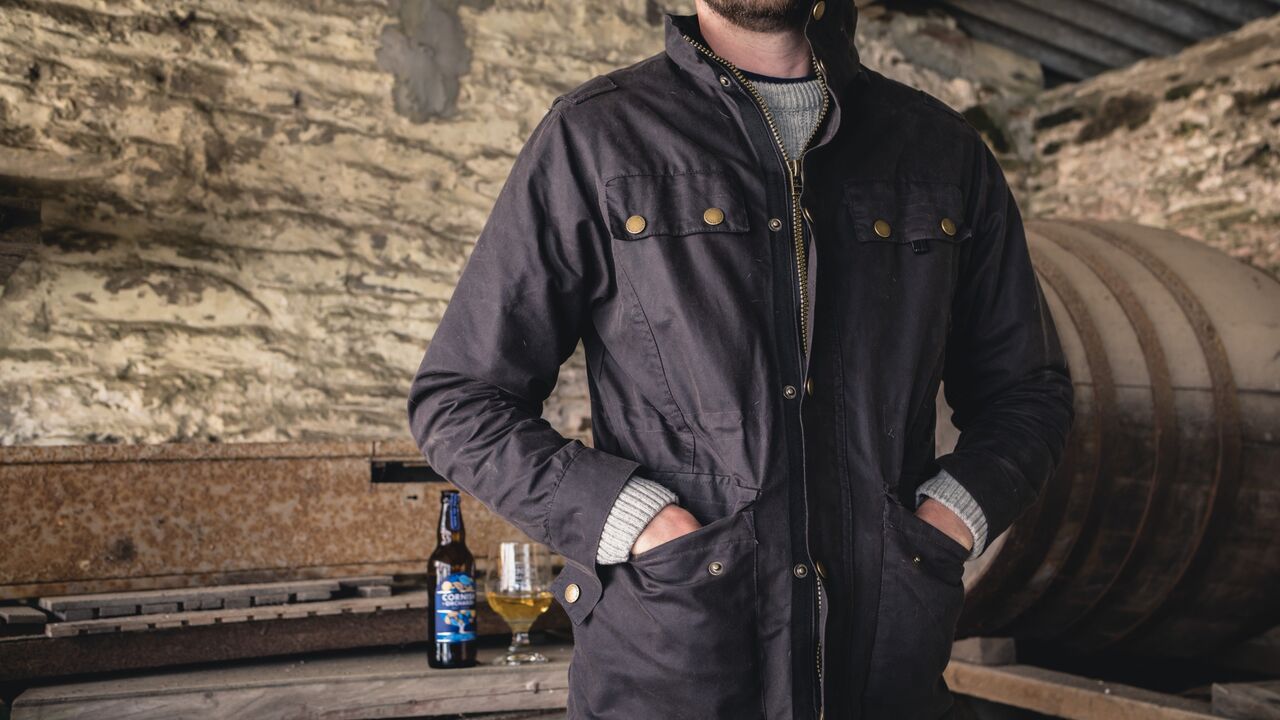

We are tucked away in the picturesque Looe valley of South East Cornwall and surrounded by 100 acres of orchards, woodland and farmland. These features played a key role in our farming heritage which was the foundation for us to become award winning cider producers! The surrounding landscape and environment inspires us, it attracts our customers, feeds into our brand and we have the incredible honour of crafting products with it as our backdrop, so naturally we want to protect and give back to the land around us.

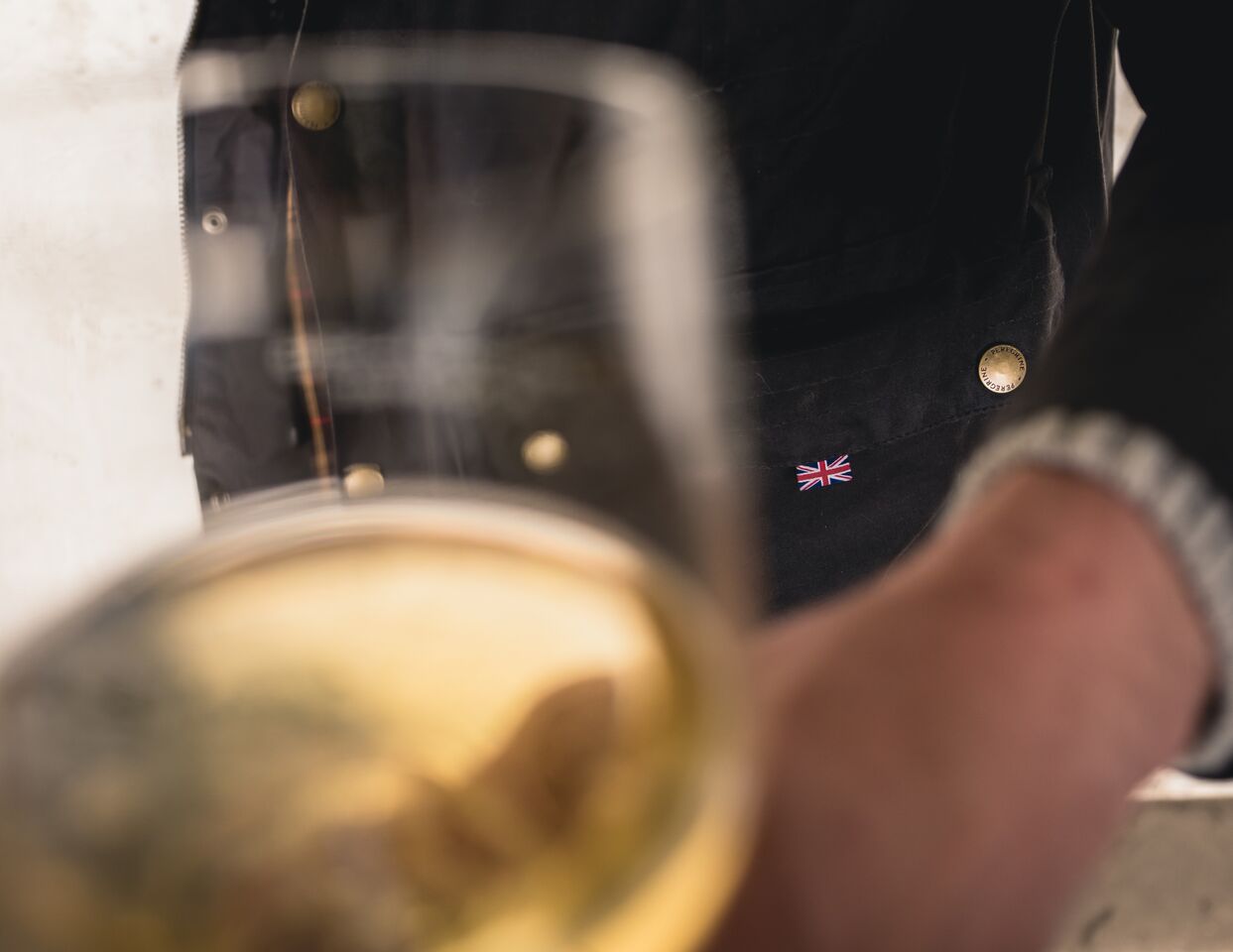
All of our ciders are made with 100% fresh pressed apples and for me that’s just the way cider should be made. We work harmoniously with the seasons to craft the finest fermented juice and much like wine, we allow an ageing of the cider to enhance flavour, aroma and complexity. This is as traditional as it gets but we also strive to guarantee consistent quality…We have invested significantly in high grade stainless steel tanks, filtration systems, a high capacity fruit press and laboratory equipment. We have processes in place that guard the quality of our products like our intensive cleaning programs and daily product sign off undertaken by yours truly. Many of these technological advancements won’t be found in the traditional, craft cider mill but we see it as integral in ensuring our customer is going to keep coming back and getting award winning quality every time.
Our Cornish Orchards gold cider is certainly our most popular, winning a gold medal at the international cider awards has propelled it to become renowned nationally and in some places abroad as well! It’s that perfect summer garden cider, easy drinking, fruity with a subtle, dry undertone and an immensely refreshing finish.
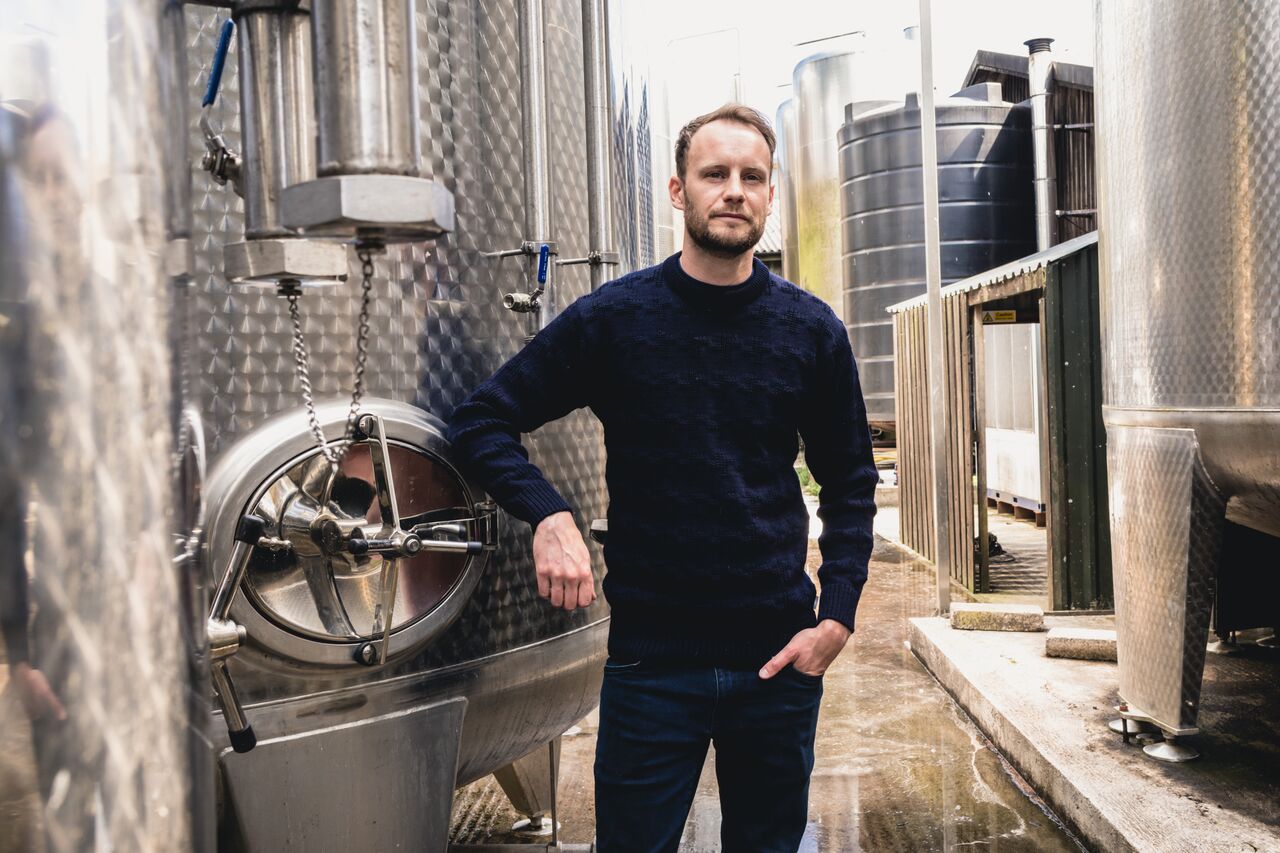
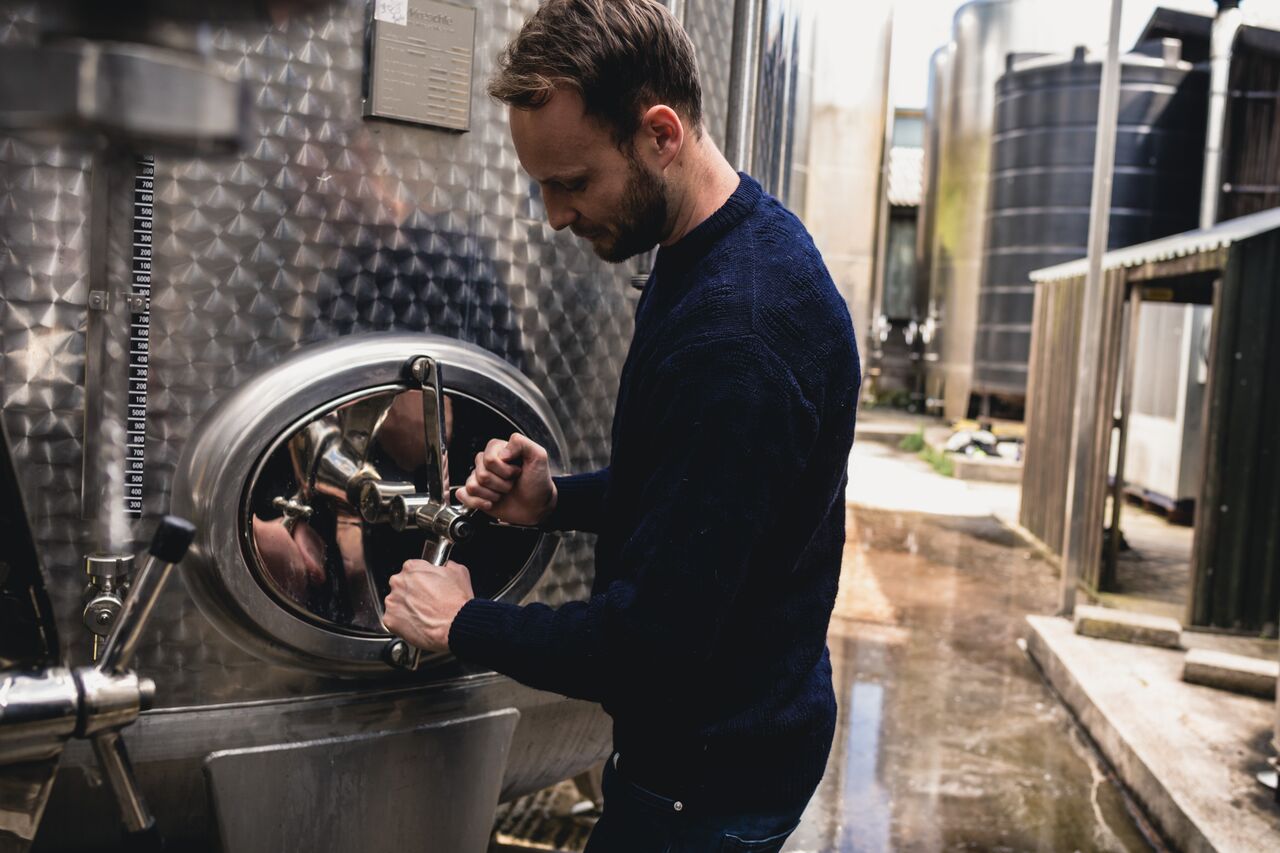

My favourite has to be my new dry cider blend, our brand new release. It was a real labour of love and because it’s a dry there’s no hiding anything in sweetness. It has to be exactly the right apple varieties, sugar level and balance or its completely wrong; a real craftsman’s cider. I like something with a bit of bite and complexity which really shines through In this product, it’s full of character whilst still VERY drinkable! Genius
There are some brilliant producers out there making cider using very traditional methods and shout out to them all for helping educate and drive “real” cider! I think what sets us apart and personally what I am most proud of is our consistency in delivering really high quality products. We continue to produce with traditional practices; harnessing the environment to create different styles of cider, working with local apple growers, maturing for many months to develop character and hand blending every batch all whilst never compromising quality.
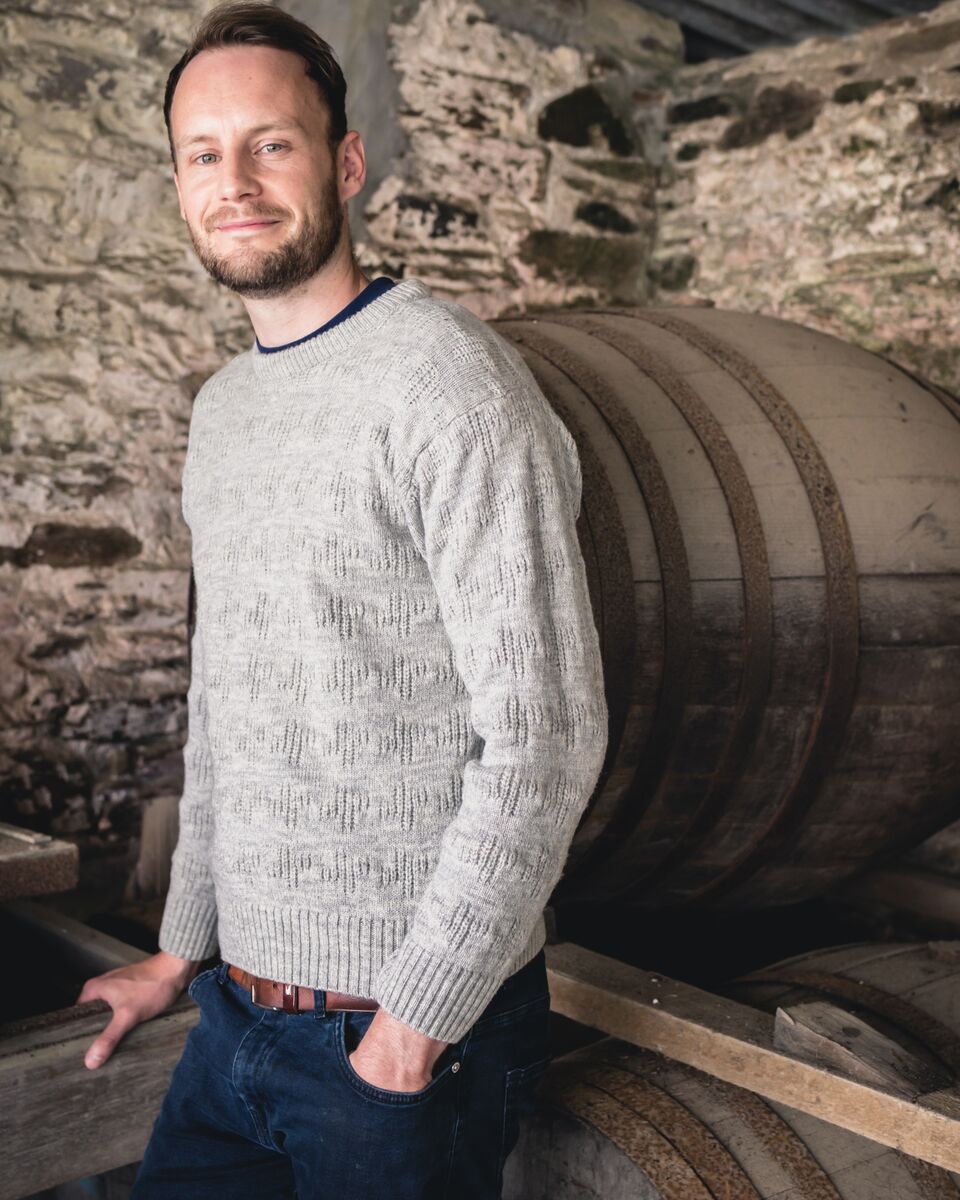
Absolutely! the success of our brand was built in the early days on great relationships and help from local businesses and producers around us, we’ve never forgotten that! We have a wonderful story to tell about the heritage of Cornish Orchards, the local area and the way we work. I think this benefits us and has been an example to other British brands where increasingly the customer wants to buy into a brand that fits with their beliefs and in our case customer that wants to drink with purpose.
Our apple harvest begins at the end of September where the fruit is picked, pressed and the juice is fermented into cider. This takes about 8 weeks before it is the matured for a minimum of 6 months. Its then ready to blend with which is a two day process… All in all a pint of Cornish Orchards Gold will take 8 – 10 months to create…Our Vintage and Heritage cider can be double that!
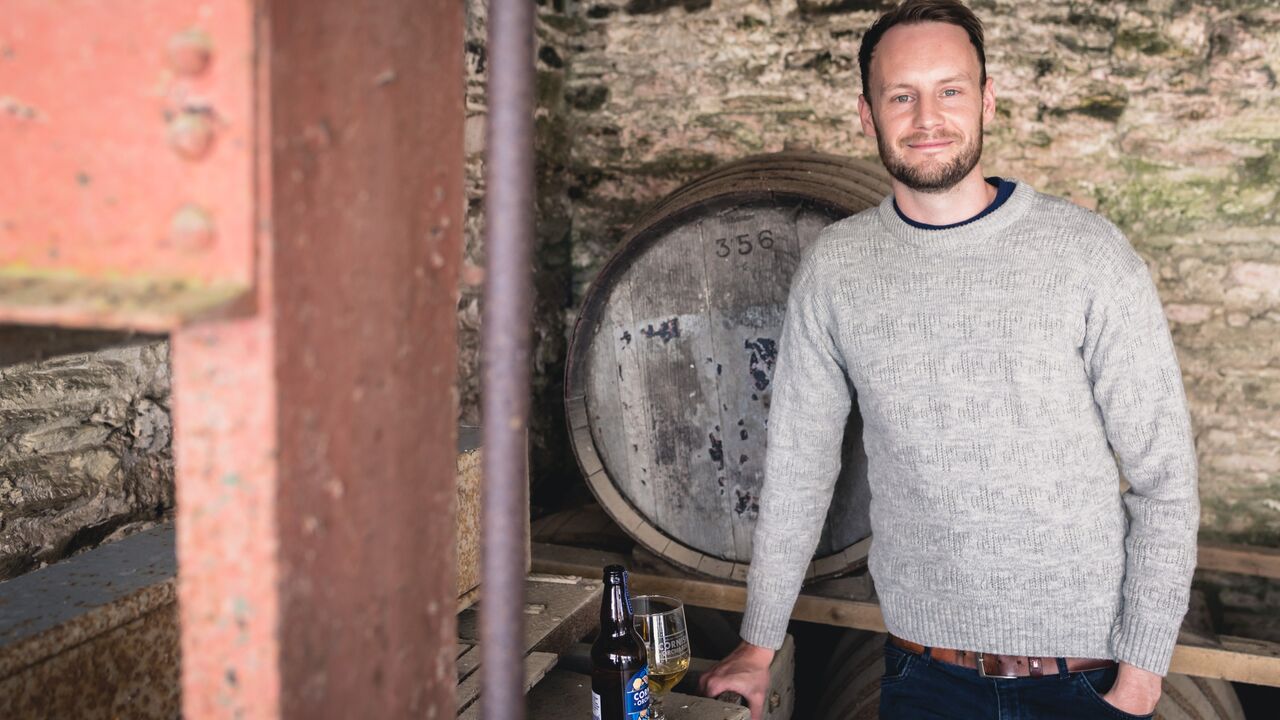

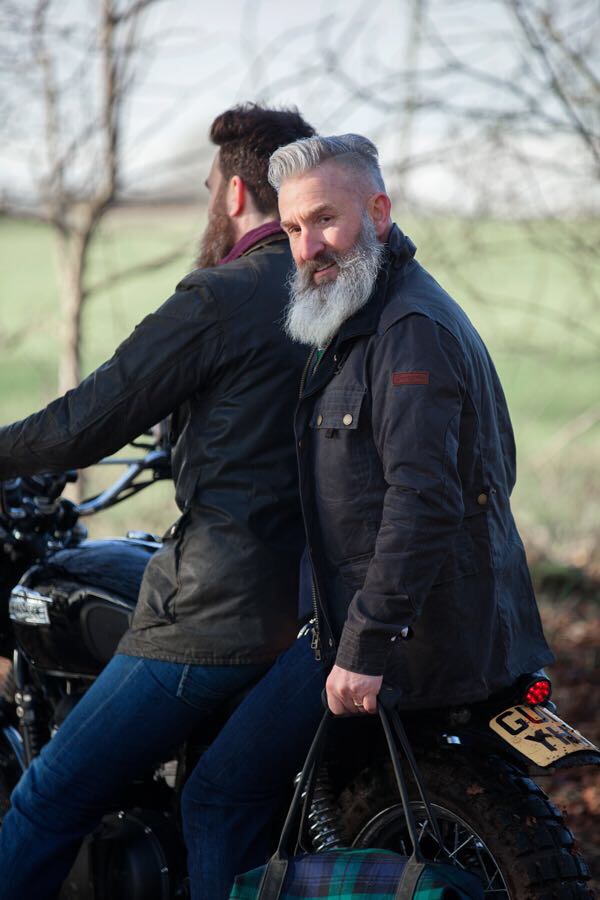
The above images were shot in Salisbury and feature Jason (owner of Regent Tailoring) and close friend Nigel Clifford Charles Card. – Nigel wears the Bexley in Gunmetal
Regent was founded in 2006 as a three floor, seven room emporium for the modern gentleman harboring a unique and characterful taste. The shop was founded by Jason Regent who takes great inspiration from his Grandfather Frank who was butler to Ian Fleming (Author of the James Bond novel’s). Jason also has a vast wealth of experience in the tailoring industry which he applies every day to his line of work.
Regent stock a select range of brands with the concept of British Manufacturing at their core. Catering for every need from stylish shoots to contemporary casual-wear and all the fun and exciting bits and pieces you may need in between.
Read our 5 minute chat with Jason below..
Hi Jason, to begin with, perhaps you could you explain how the Regent tailoring first originated and how the launch of the concept came about?
The Regent story started in the most unlikely of places: a garage unit on an industrial estate in Salisbury, Wiltshire. But in just under five years, the business relocated twice and is now run from a three-storey building near the gates of Salisbury’s thirteenth-century cathedral. This journey I think really reflects the company’s commercial success and shows that the winning formula is a product of the different personalities who work at Regent.
Are there further plans for expansion?
Yes absolutely, do even more to spread the word about Regent!
What is the core profile of the ‘Regent’ customer?
We cater for everyone from a 16year old to 99 year old so the net falls very wide when it comes to our core customer base. Essentially we aim to have something for everyone whether someone is coming in for a bespoke suit fitting or just to browse for gifts.
What has been your favorite piece from past Peregrine collections?
For us it is always the knitwear and of course the Bexley jacket!
What do you look forward to most about the new year ahead?
We look forward to our Winter Delivery’s from you (Peregrine). And to transitioning onto a new website as with a lot of independent retailers, e-com has become a very important aspect of our business
I have very much been looking forward to publishing this piece so naturally have kept putting it off in fear of not doing it the justice it deserves. Malcolm is a boat builder and restorer who lives and works with his partner and fellow worker Pam. Over the years, Malcolm has developed a body of work and expertise in the Canal industry as well as having a number of historic narrow boat restorations under his belt.
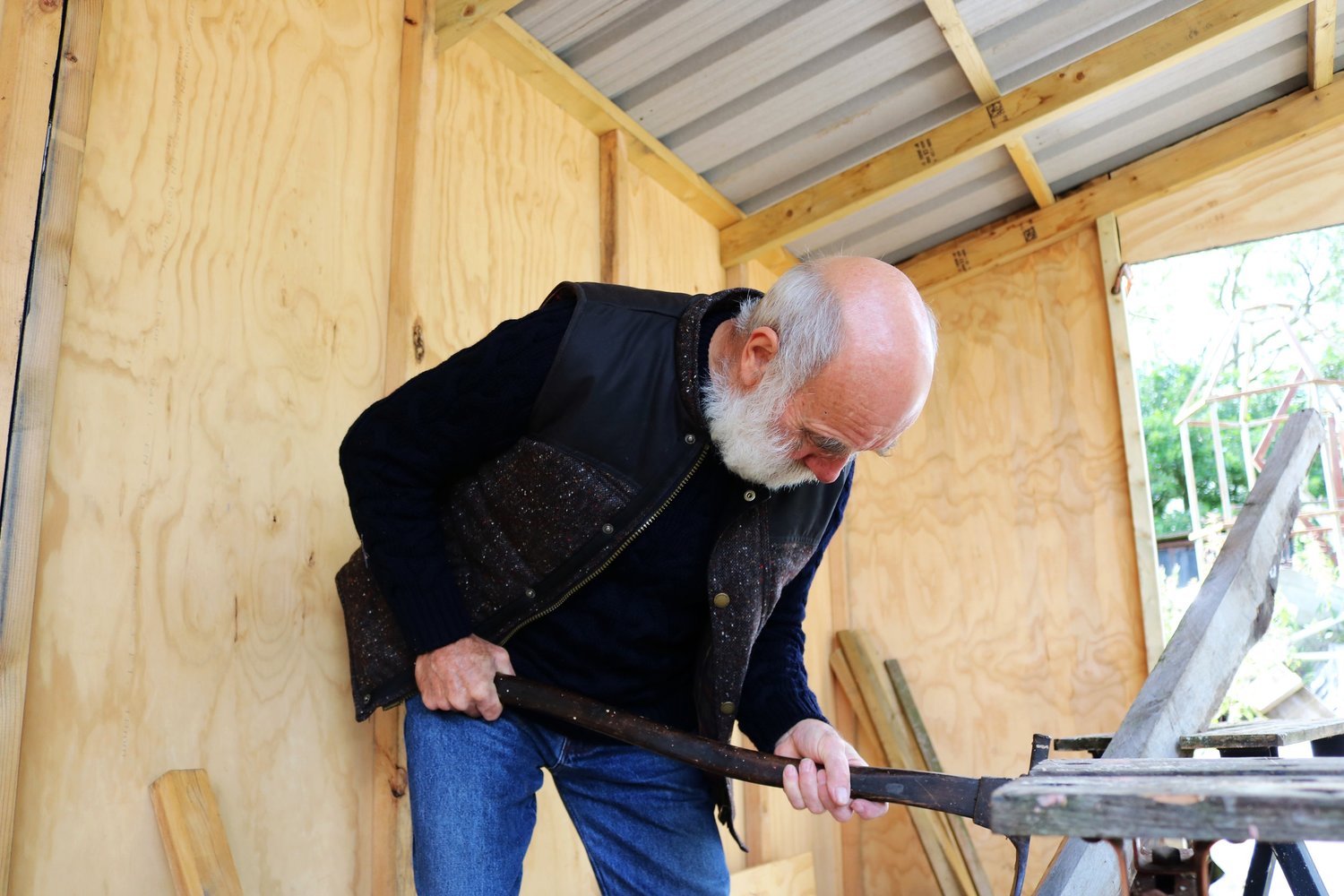
Among these roles Malcolm is also my Grandfather and what child wouldn’t relish spending their school holidays on a boatyard; building, exploring and always running a little too close to the canal’s edge. My Grandma Pam would teach me to paint roses in the same, traditional style that she painted on the narrow boats and Malcolm would let me and my brother work the locks when we were out boating: A task to be taken very seriously as a child (and often with some help from Dad).
They taught me a great deal about patience, hard work and what it means to live a life of quality so I wanted to share a little of their world in the form of a chat with Malcolm and some photographs of him working in Peregrine Clothing.
Over to Malcolm!
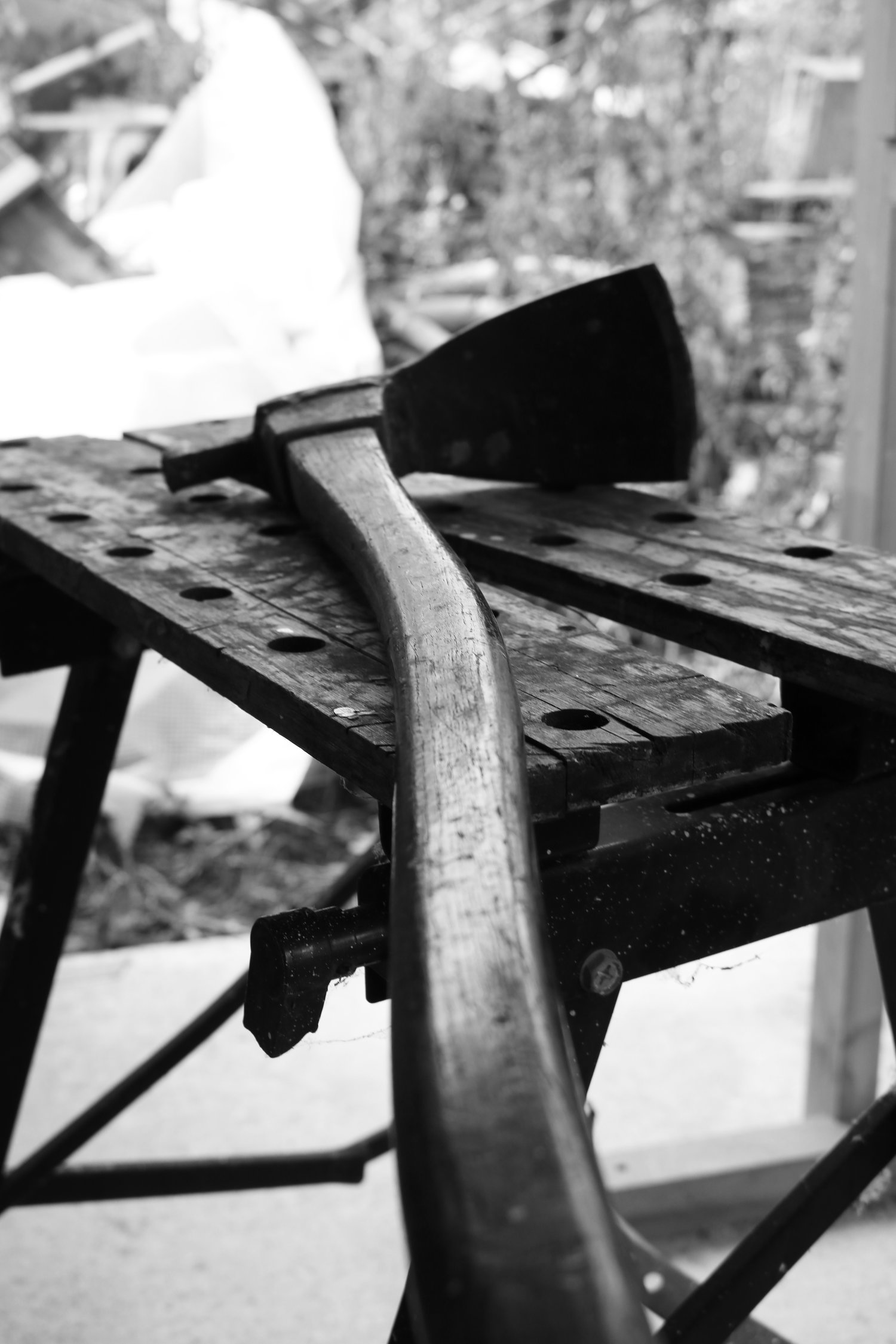

Malcolm wears the Combe Crew (Navy) and the Halcolmbe Tweed Gilet (Brown)
My name is Malcolm Webster.
I moved to the Cheshire area in the early 1970’s, where, by chance, I discovered the inland waterways system. This was only a few years after the last working boats (carrying cargo) had ceased trading. I became fascinated with these , now ex-working, craft and with my partner Pam set about restoring one for our own use.
I had no formal training as a shipwright or boatbuilder, but was brought up by a practically minded father, who paid great attention to detail and always deemed it better, where possible, to make something oneself, rather than buy it!
During the restoration on our first boat, it was noticed by onlookers that I had some aptitude for the job and thus by chance, certain other work was put my way. One thing led to another and within a few years I had gained a reputation for being one of the few people in the country capable of carrying out extensive repairs on wooden canal boats to an acceptable standard. Not surprising since the demand was not exactly overwhelming, but gratifying nonetheless. Importantly though, it is always my hope that I have been engaged because my work is seen as something a bit in excess of “acceptable”.
Many major contracts have now been completed, from relatively small jobs to complete rebuilds and including work for the National Waterways Museum and preservation societies. The business was consolidated when we acquired premises on the Trent and Mersey canal in 1983 and developed it into a working boatyard.
Perhaps the most important aspect of the work is that of “getting it right”, both in the interpretation and realization of the project in hand and never accepting less than one’s best effort. There is no pleasure or satisfaction to be gained by sub-standard application or workmanship. Sadly this is not always displayed in the goods and equipment I buy, so I am always particularly gratified when I come across products where thought, design and quality are clearly uppermost in the minds of the designers and makers. I am very pleased to have found this to be the case with some recent clothing supplied by Peregrine. Although they do not supply the requisite “boilersuit”, necessary for much of the extreme protection, their woollen wear and jackets provide all the comfort, warmth, quality and style commensurate with my work. If I were a clothing designer, I would be pleased to be part of their team.
Malcolm’s work continues as does ours but we are taking a moment this Monday morning to be grateful for all of the quality things in our lives and the satisfaction and joy in working hard at something you love.
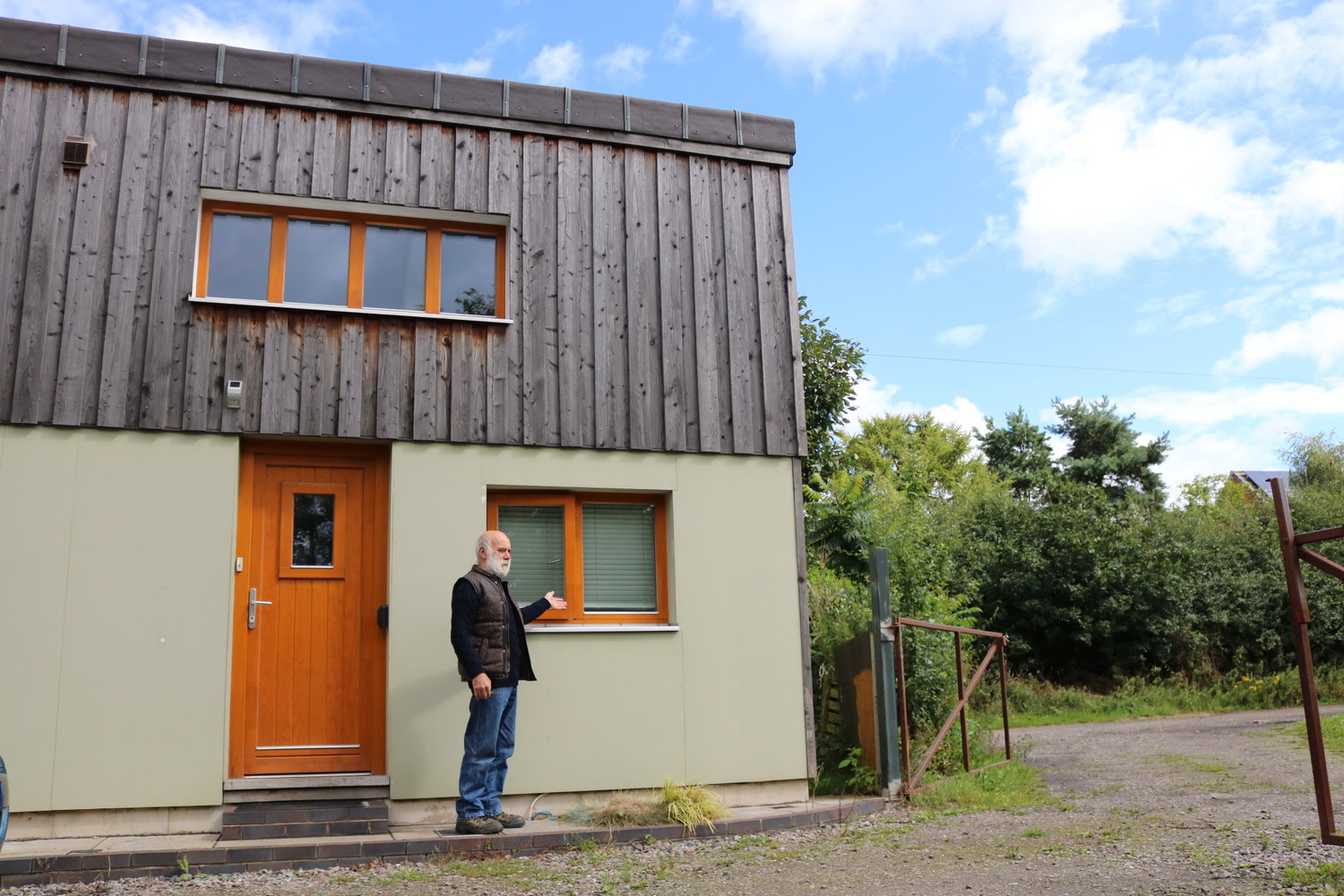
@JohnStevenMillington
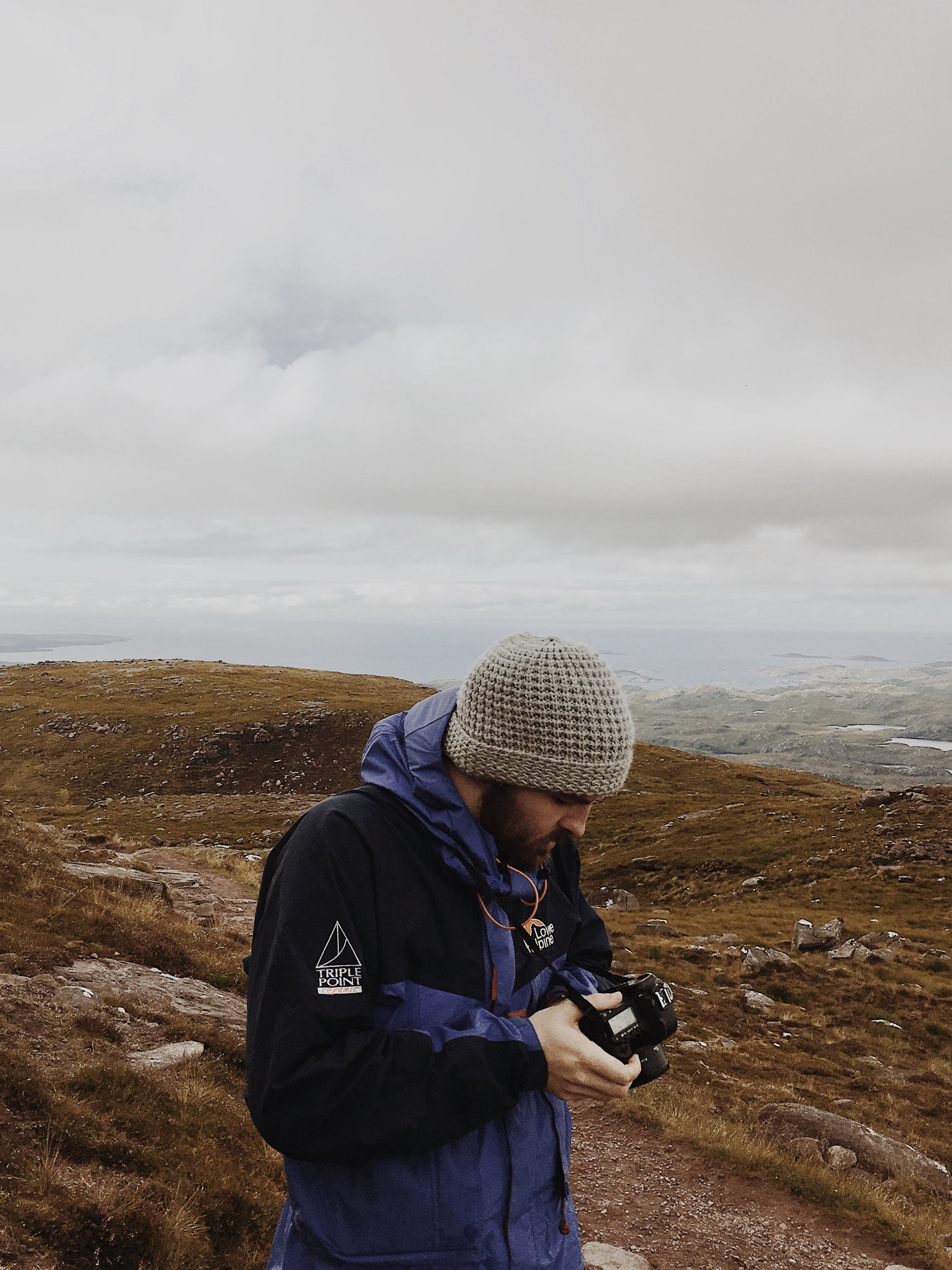
The name John Millington means a few things to us; Lifestyle photographer, a modern day explorer and a man who likes to live minimally but maximizes what the world has to offer. We had a chat with him about his style and his travels and sent him a few garms to keep him warm on his adventures!
Describe the draw of the Highlands?
– The Highlands for me are a magical place. As much as I love cities and the energy cities bring – I feel more creative and at home in the Highlands. Stripping things down to a minimum is something I deeply focus on and living here allows me to keep things very minimal, the day-to-day here is very relaxed and it is so easy to pull inspiration from your surroundings. The endless exploration of the Highlands is also a massive draw for me, there is always a new quaint little coffee shop or shoot location to be discovered!
In your opinion, what makes a great photo great?
– A great photo for me is one that moves and evokes emotion from the viewer, albeit a negative or positive emotion, it is important for me to move someone or inspire someone. Other values I look for are subject matter, tones and composition – All these things for me create a great photo.
You have travelled all over and we love following your journey! What has been your favourite place to visit?
– My favourite places I have ever travelled to are New York City, Corsica, Rome and the Highlands. Each place had its own charm that is easy to fall in love with. Not sure I could choose just one!
Describe your style to us in three words?
– Practical, Minimal, Versatile.
What does ‘Made in England’ mean to you?
– The words “Made in England” come with a massive prestige and heritage. Working with a brand like Peregrine, whose heritage dates back to the 1700’s, with that comes a very deep and strong understanding of English tradition in regards to overall brand image and approach to creating garments. Whenever you see “Made in England” you know that the garment from the design process, to the shop floor has been thoroughly planned, incredibly made and ready to wear for years to come. Supporting independent British companies is also a great thing!
Whats on your agenda to explore in the near future?
– On my own agenda for the future is to see more of my homeland Scotland! I plan on visiting a lot of the isles and tourist destinations up north, to tick off the Scottish places I want to explore on my bucket list! I also plan on going to Copenhagen once my good friends Anthony and Caroline have settled in with their newborn son!
John wears the Park Beanie in Cobble and the Cobble Cardigan in Bark
